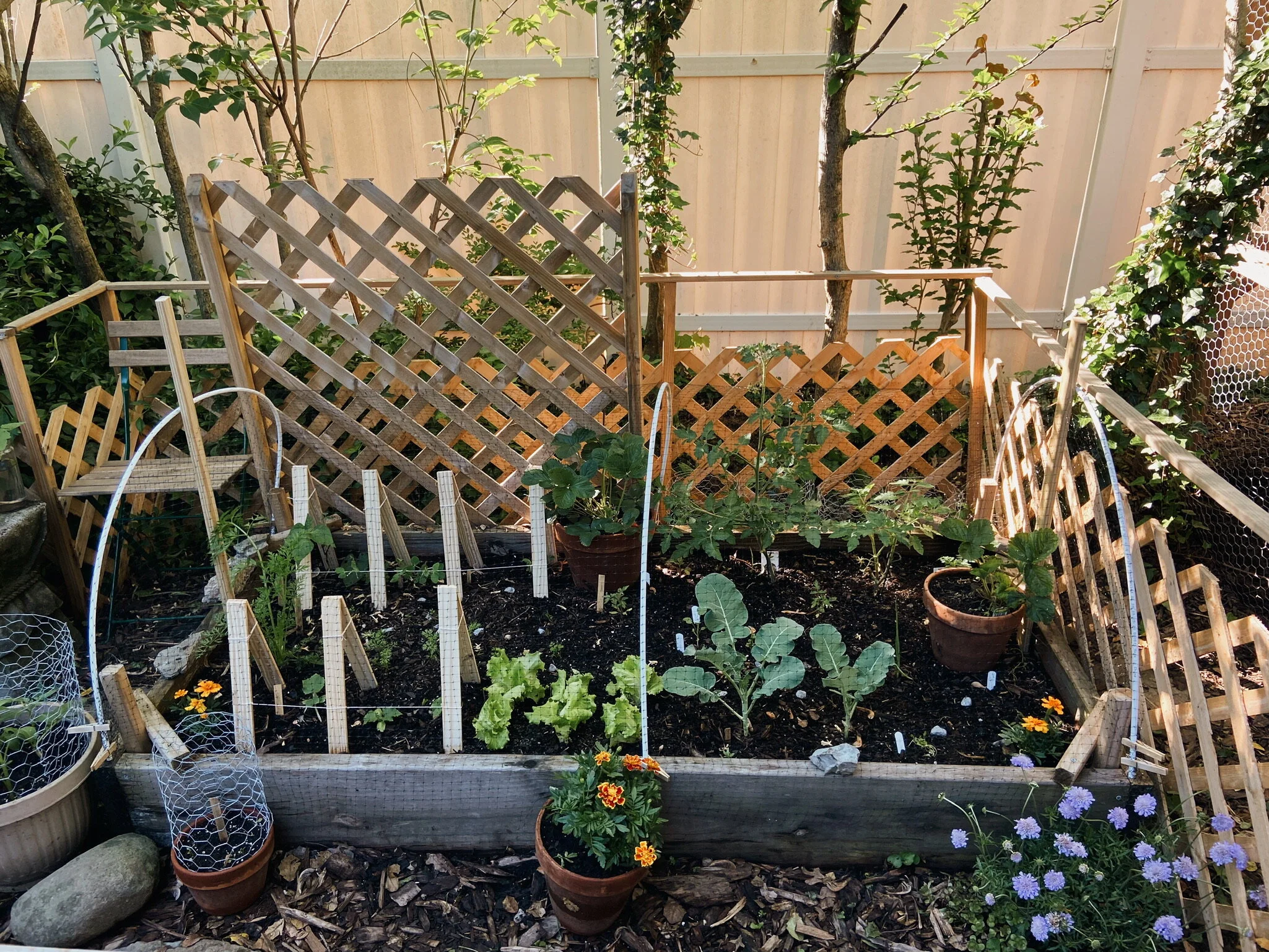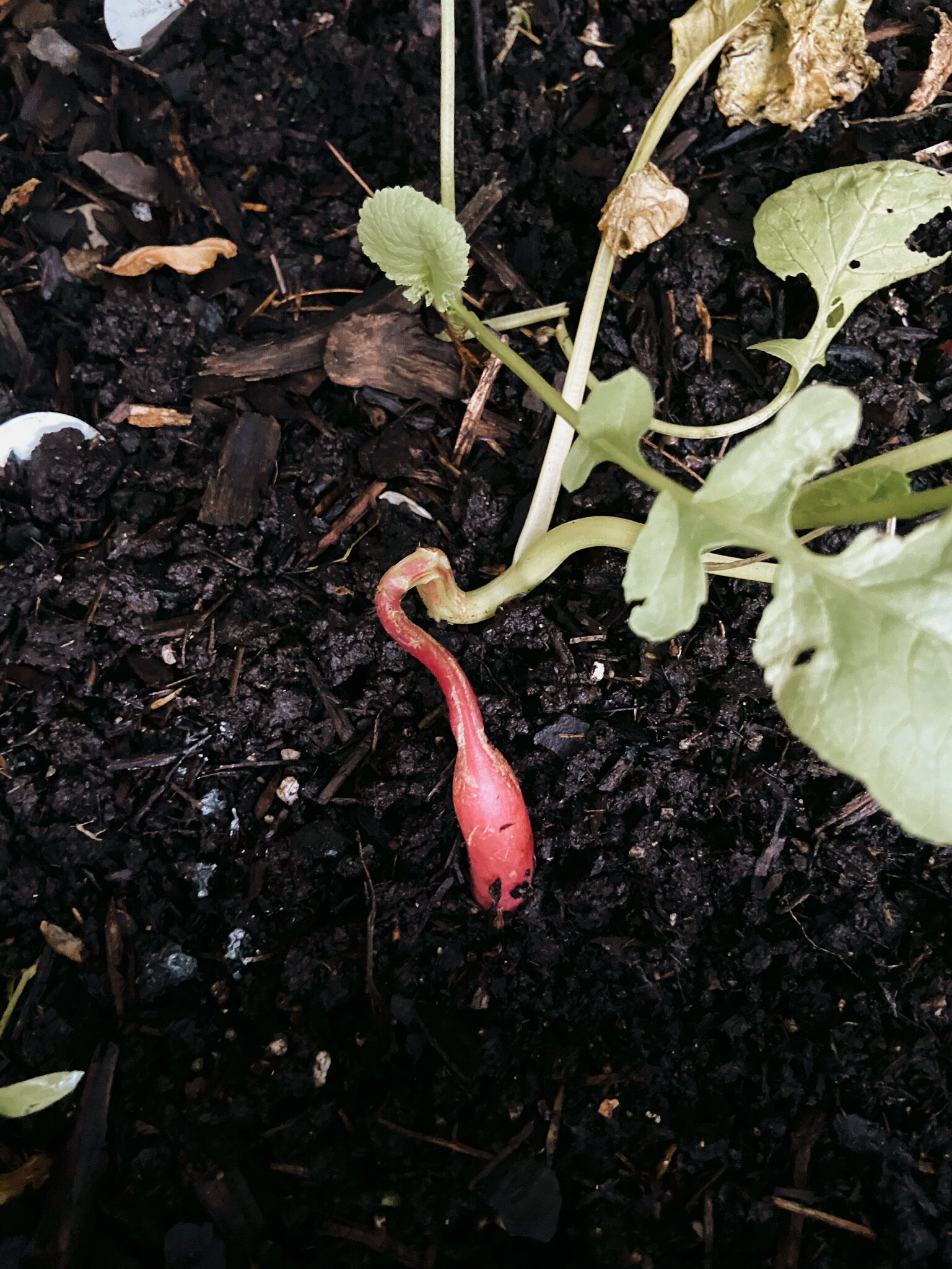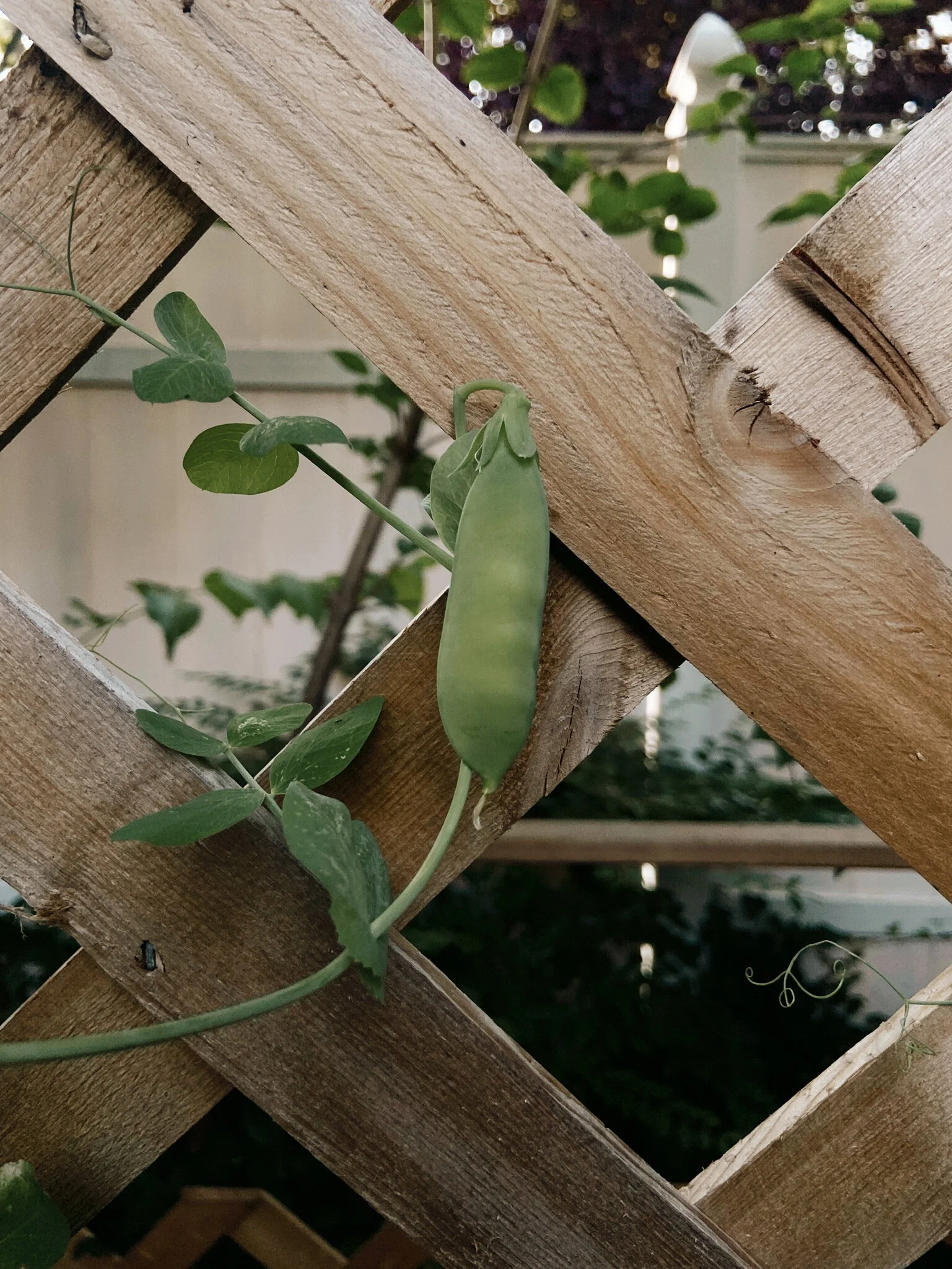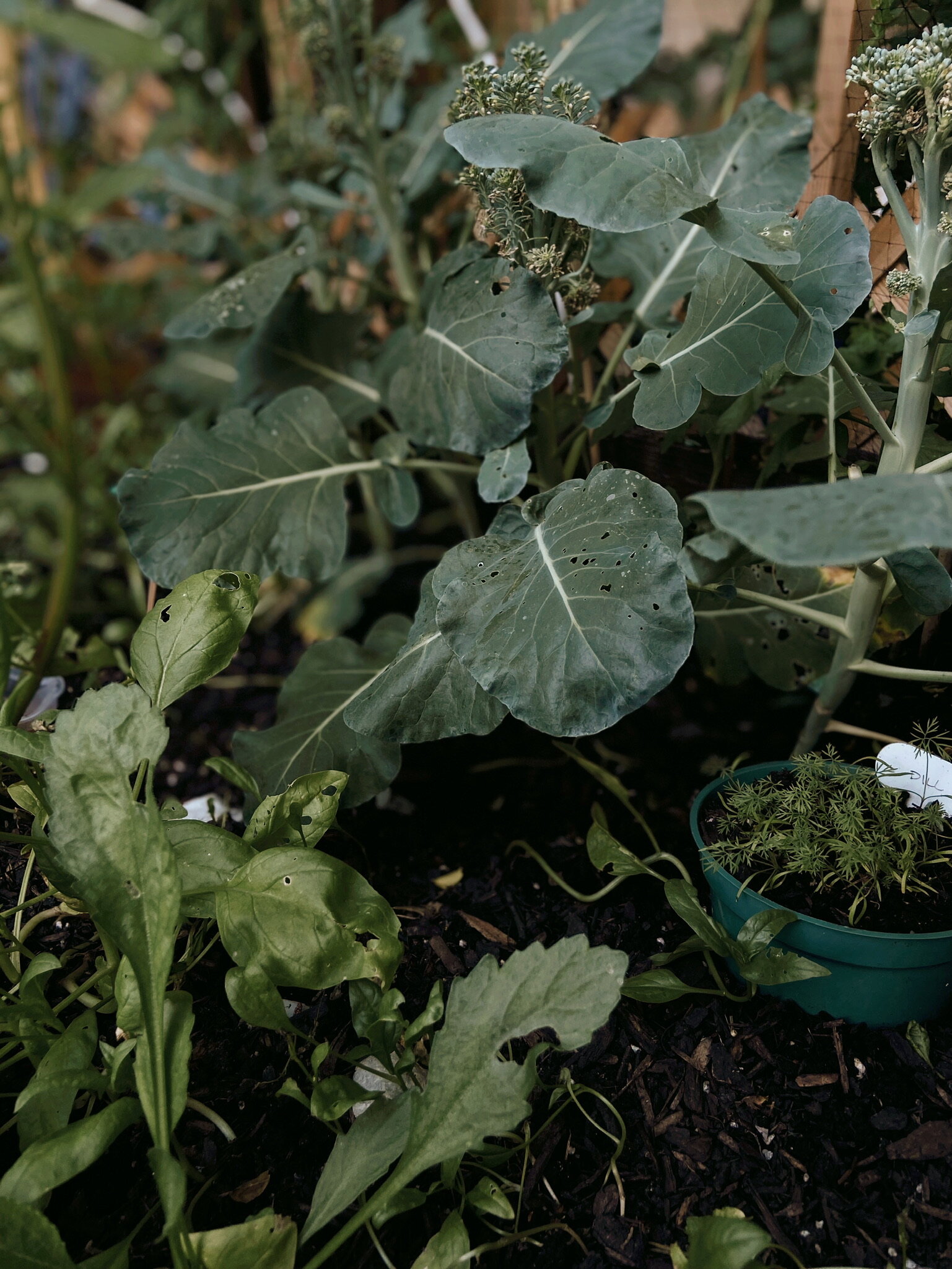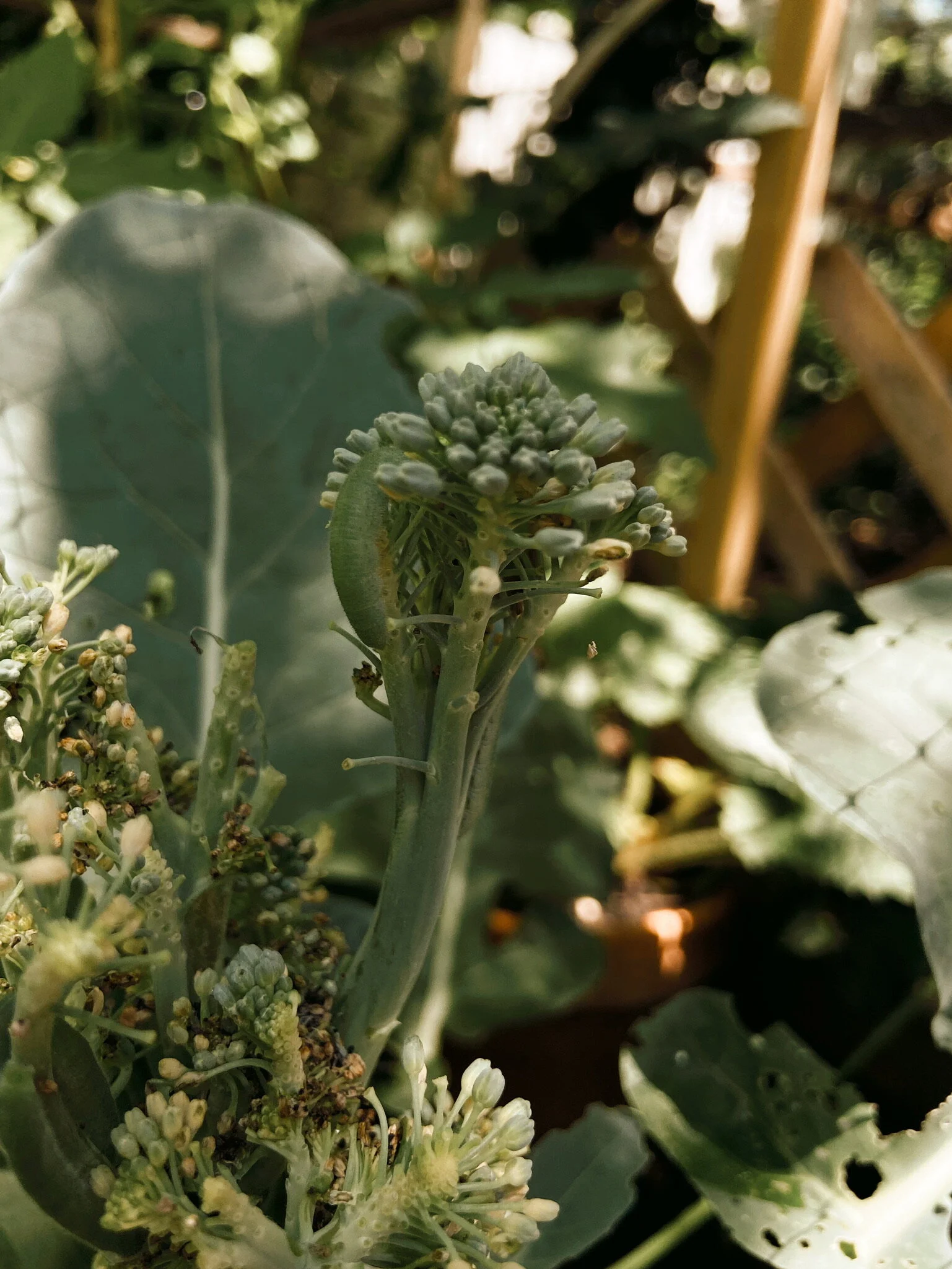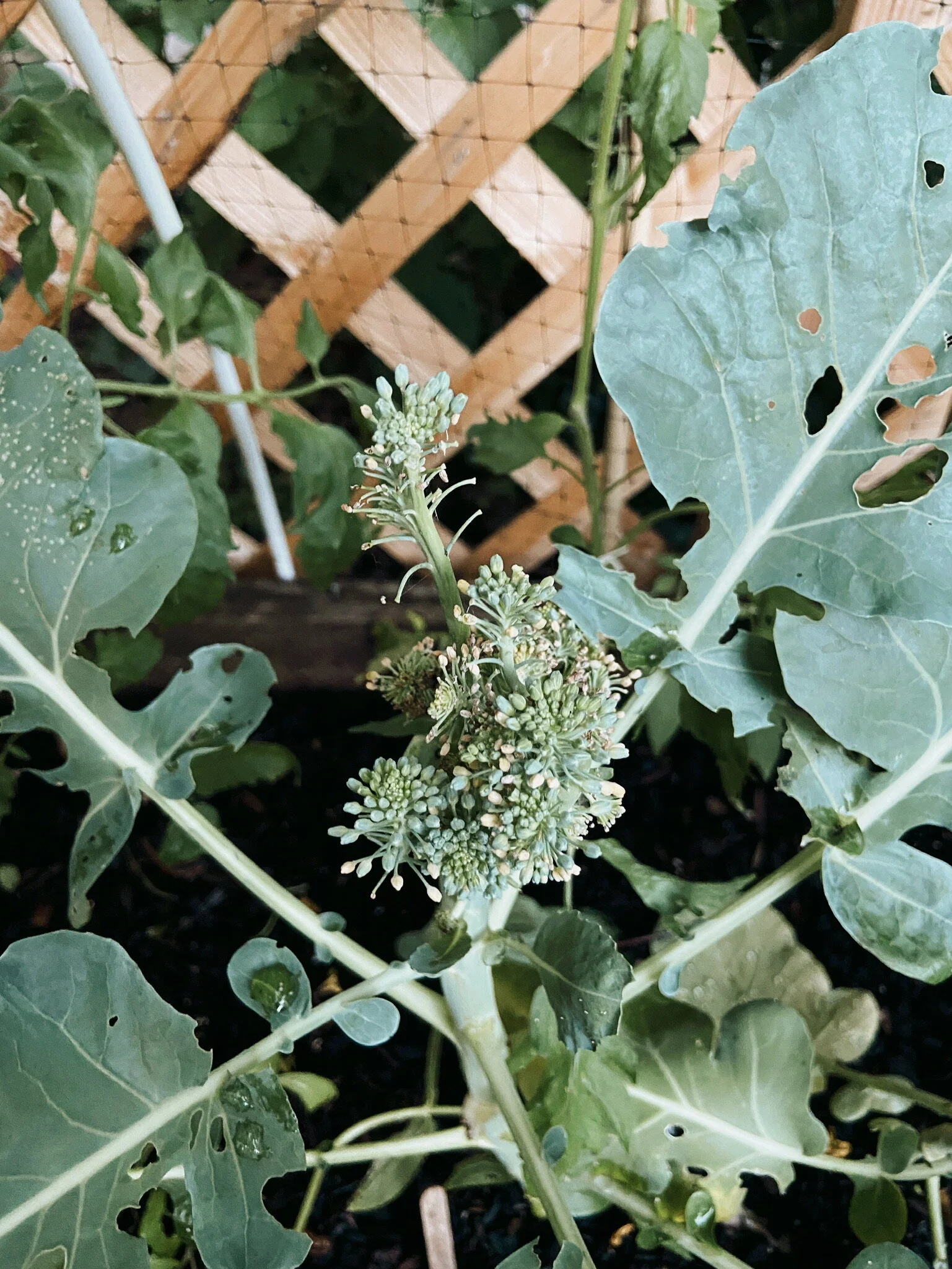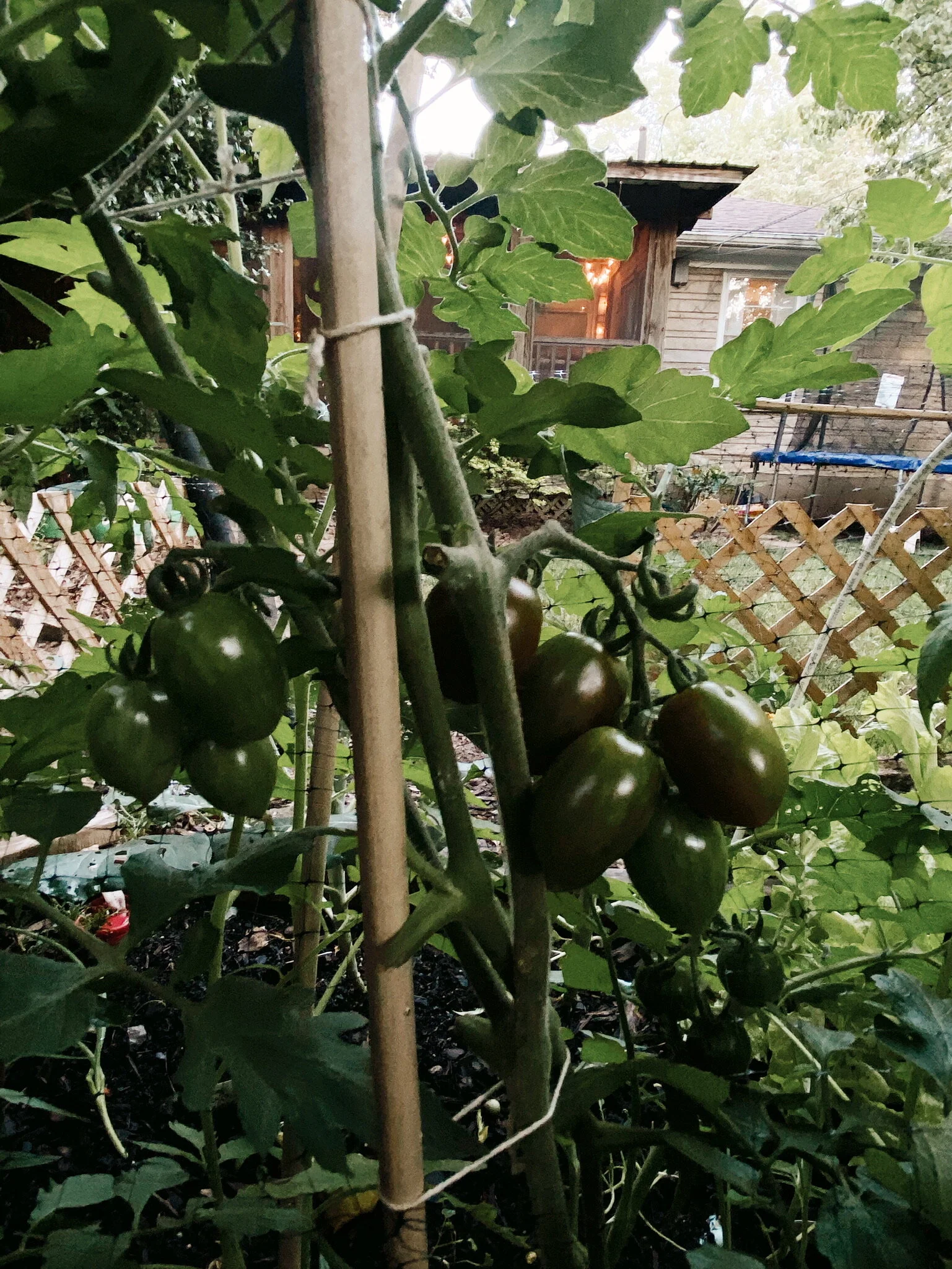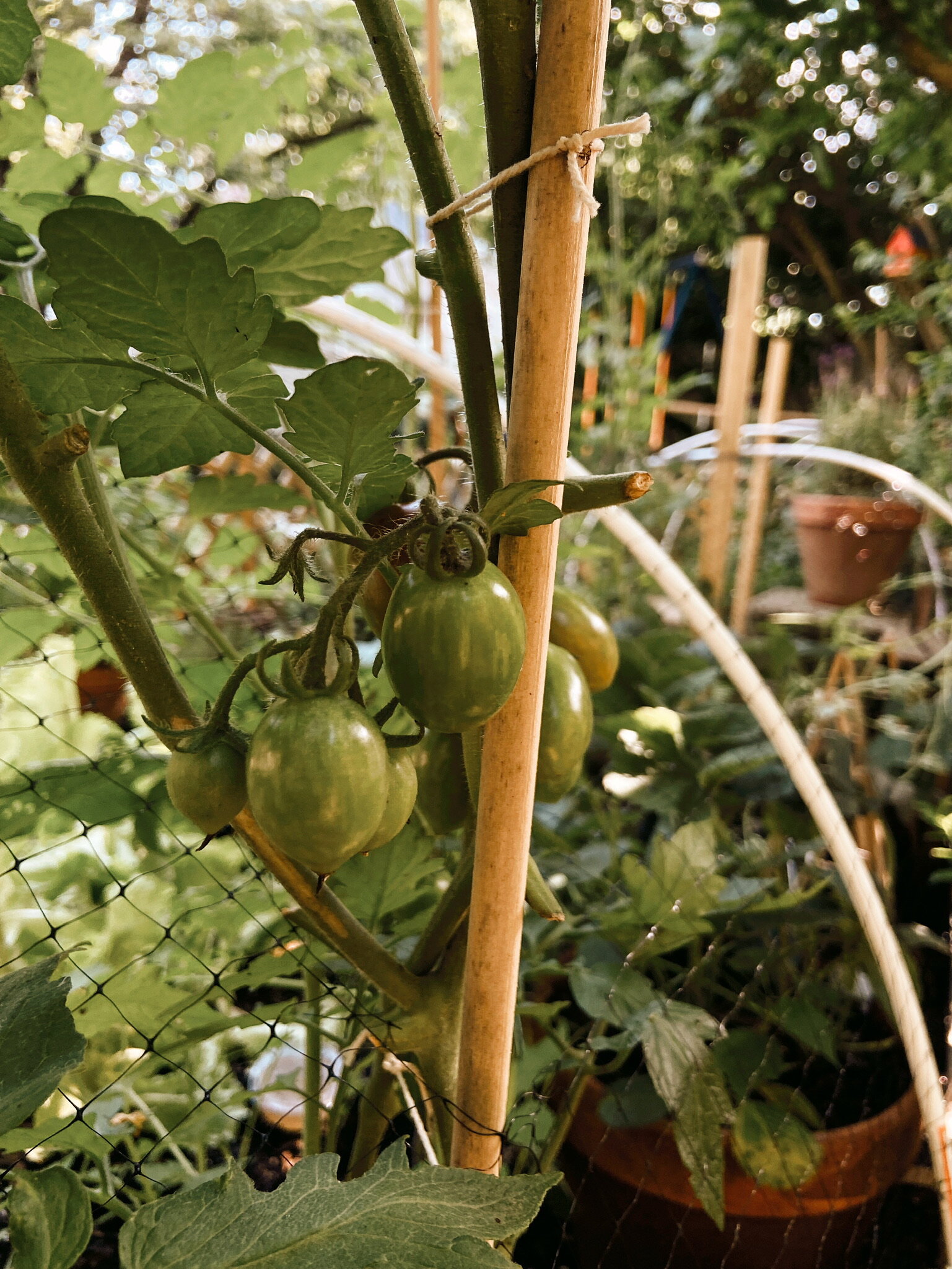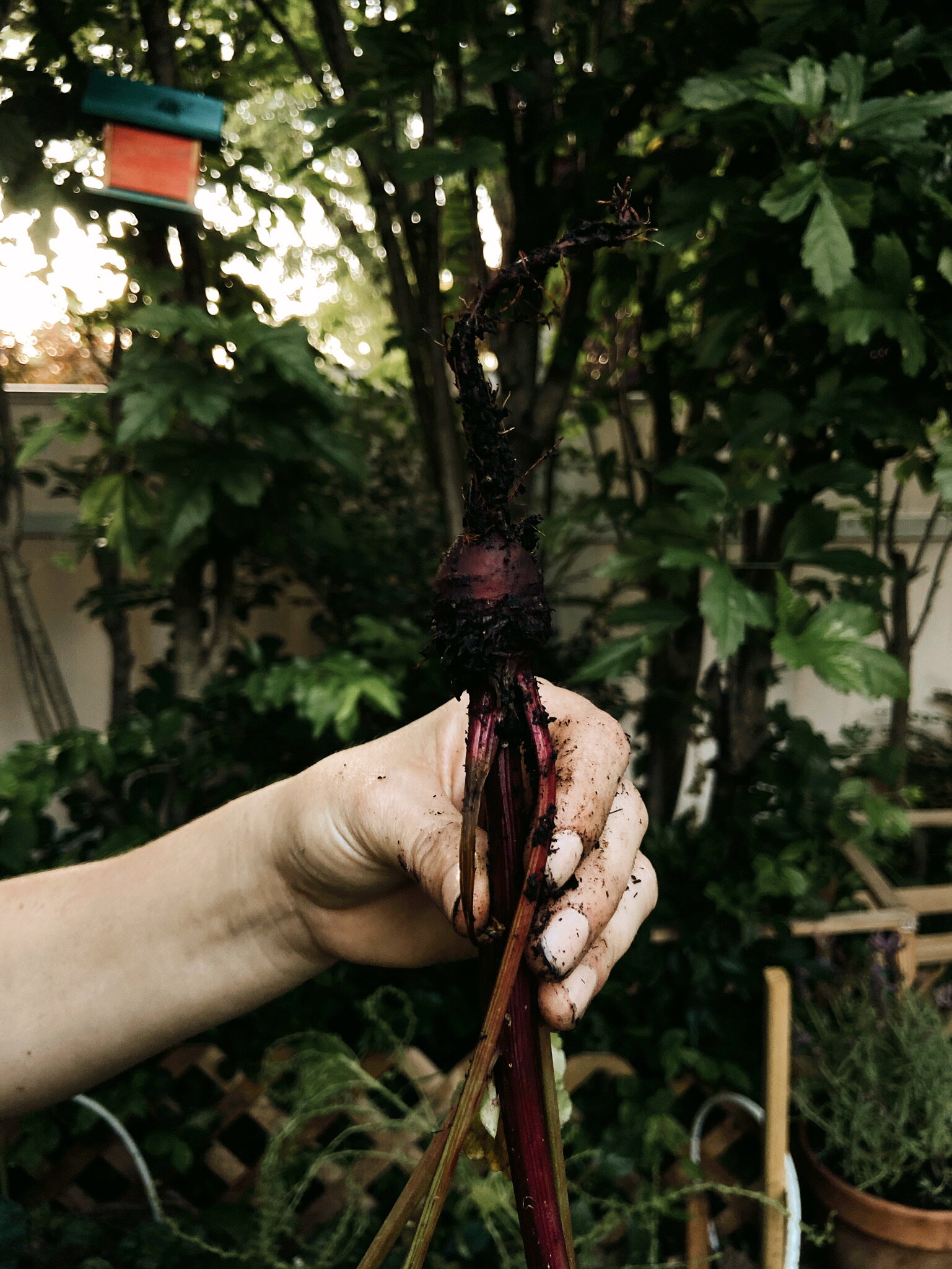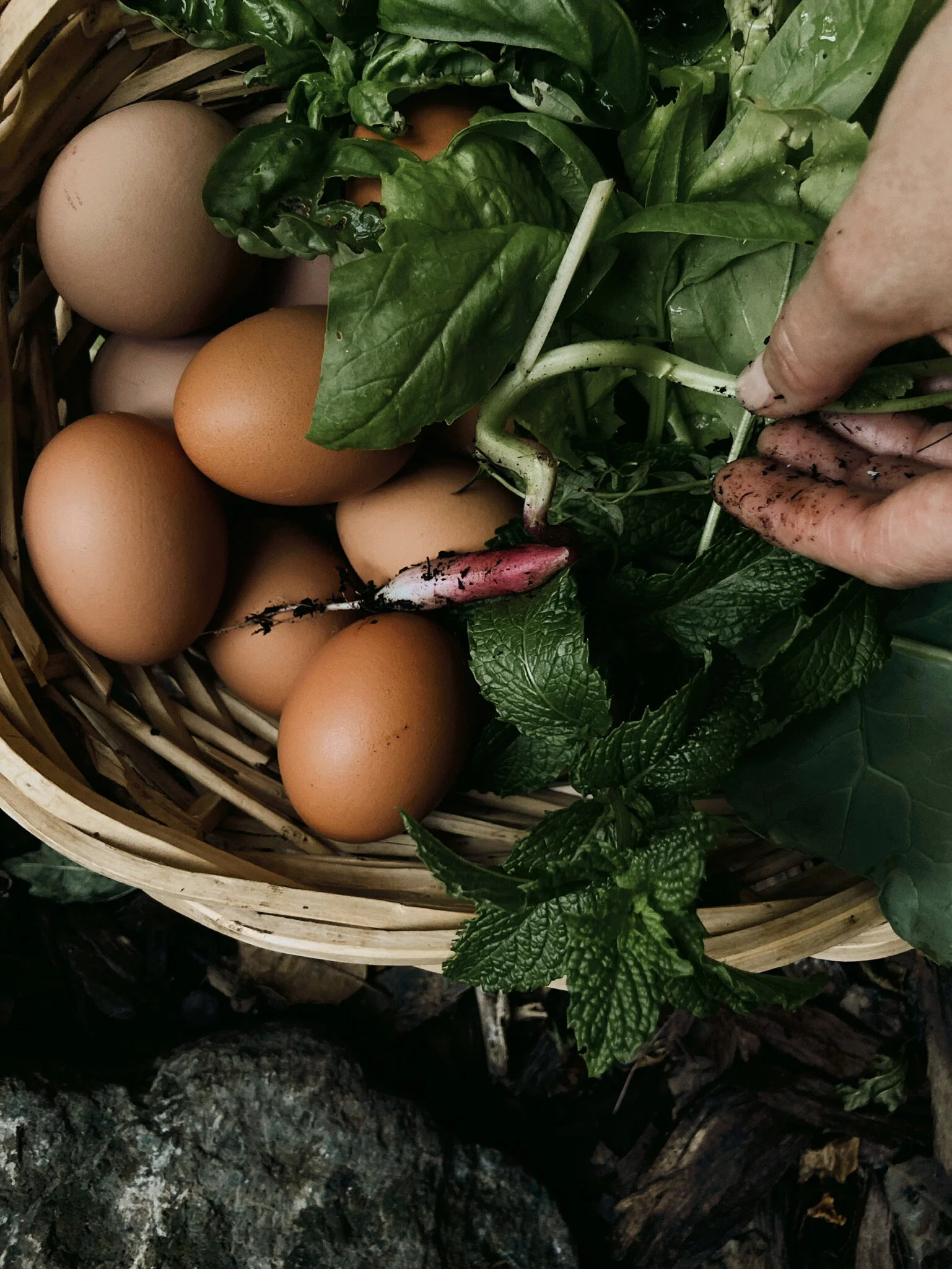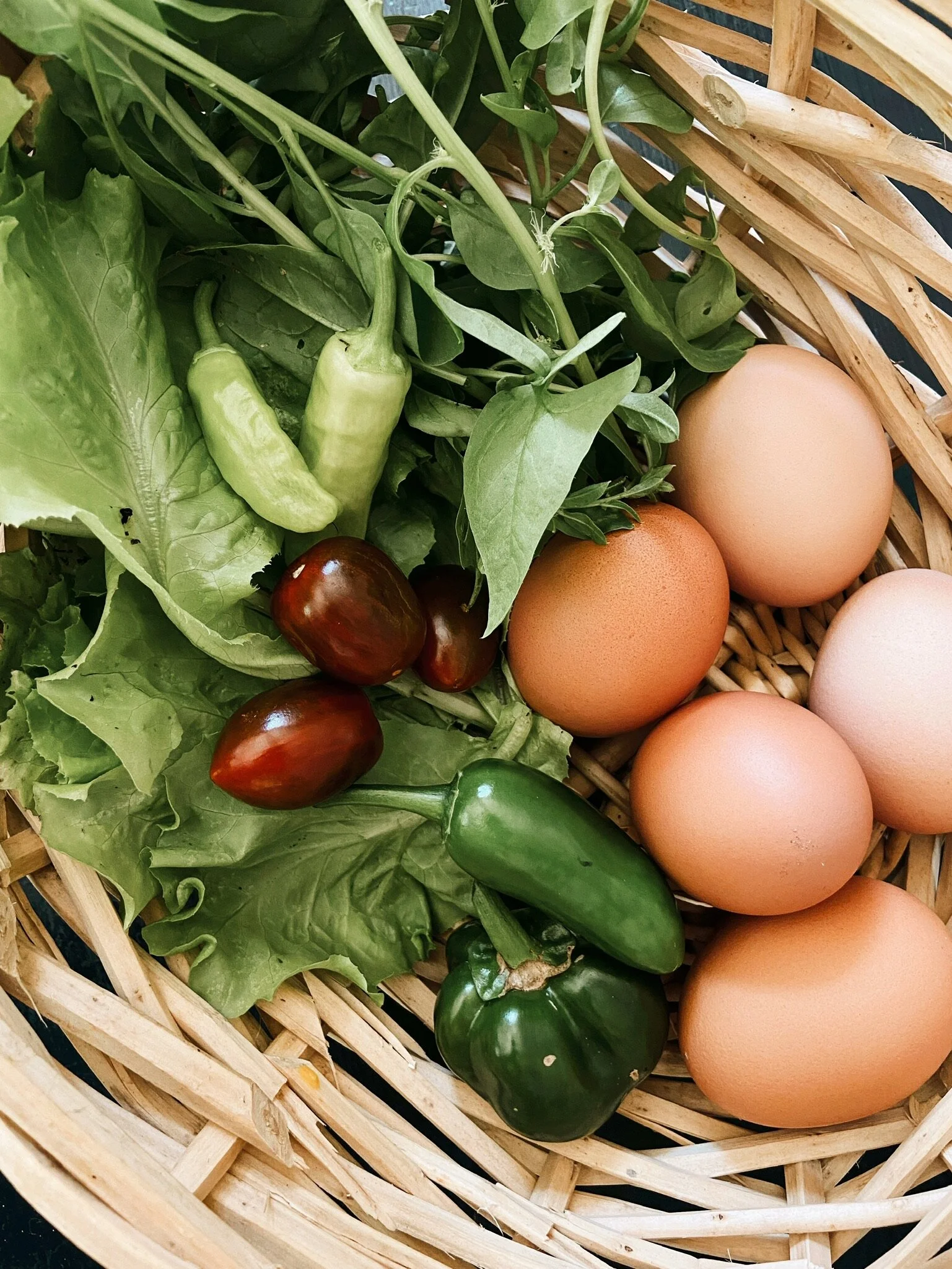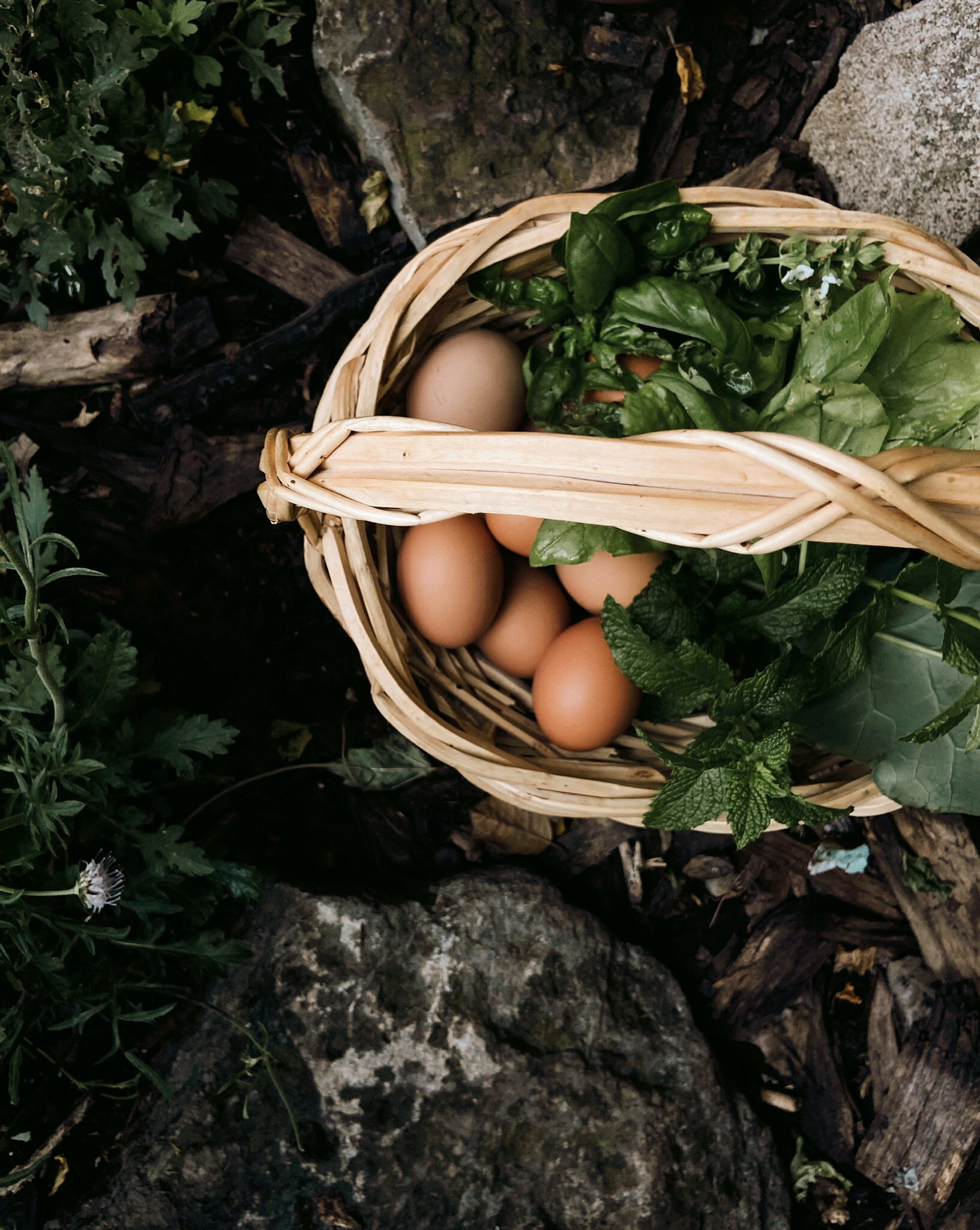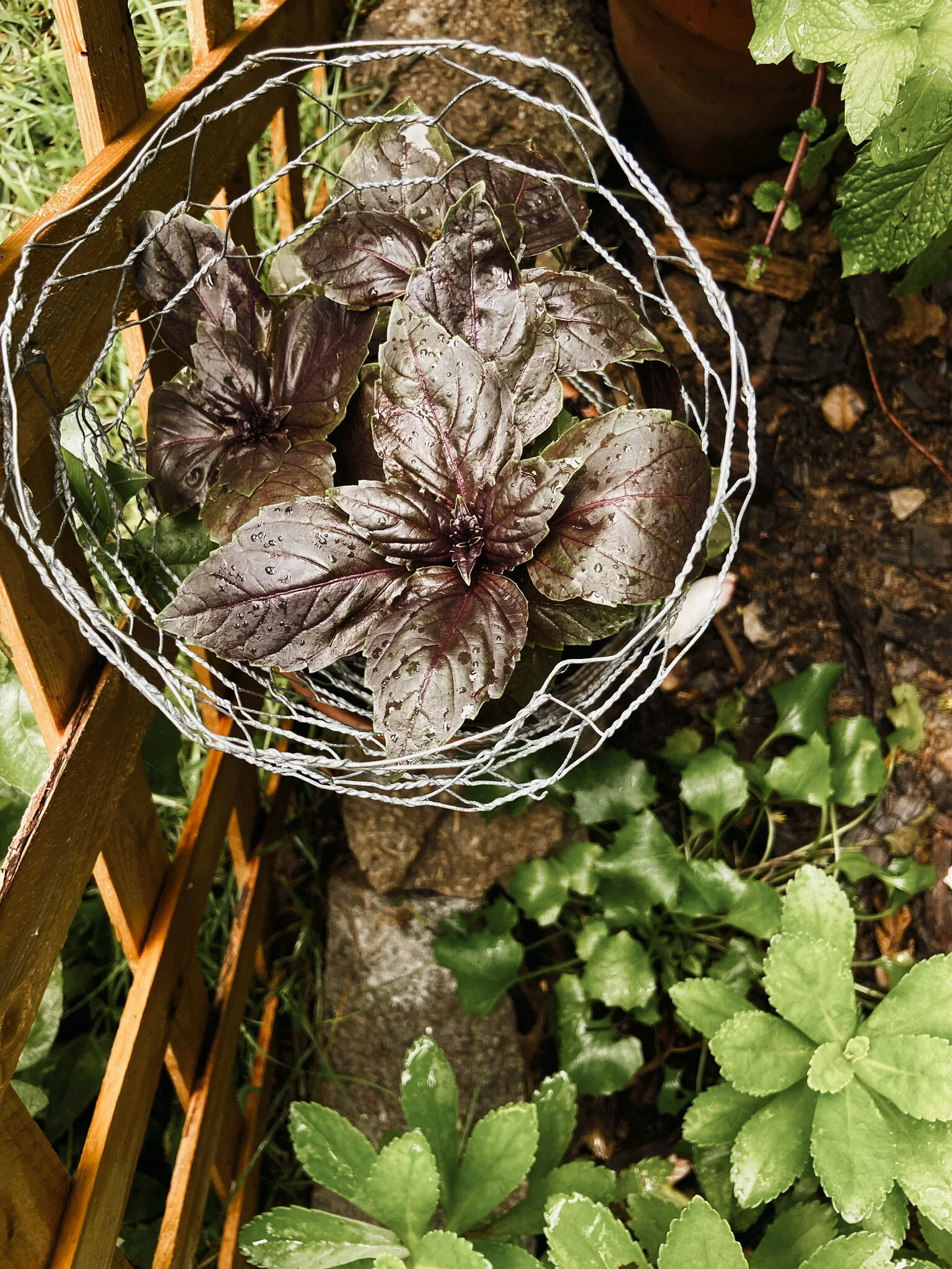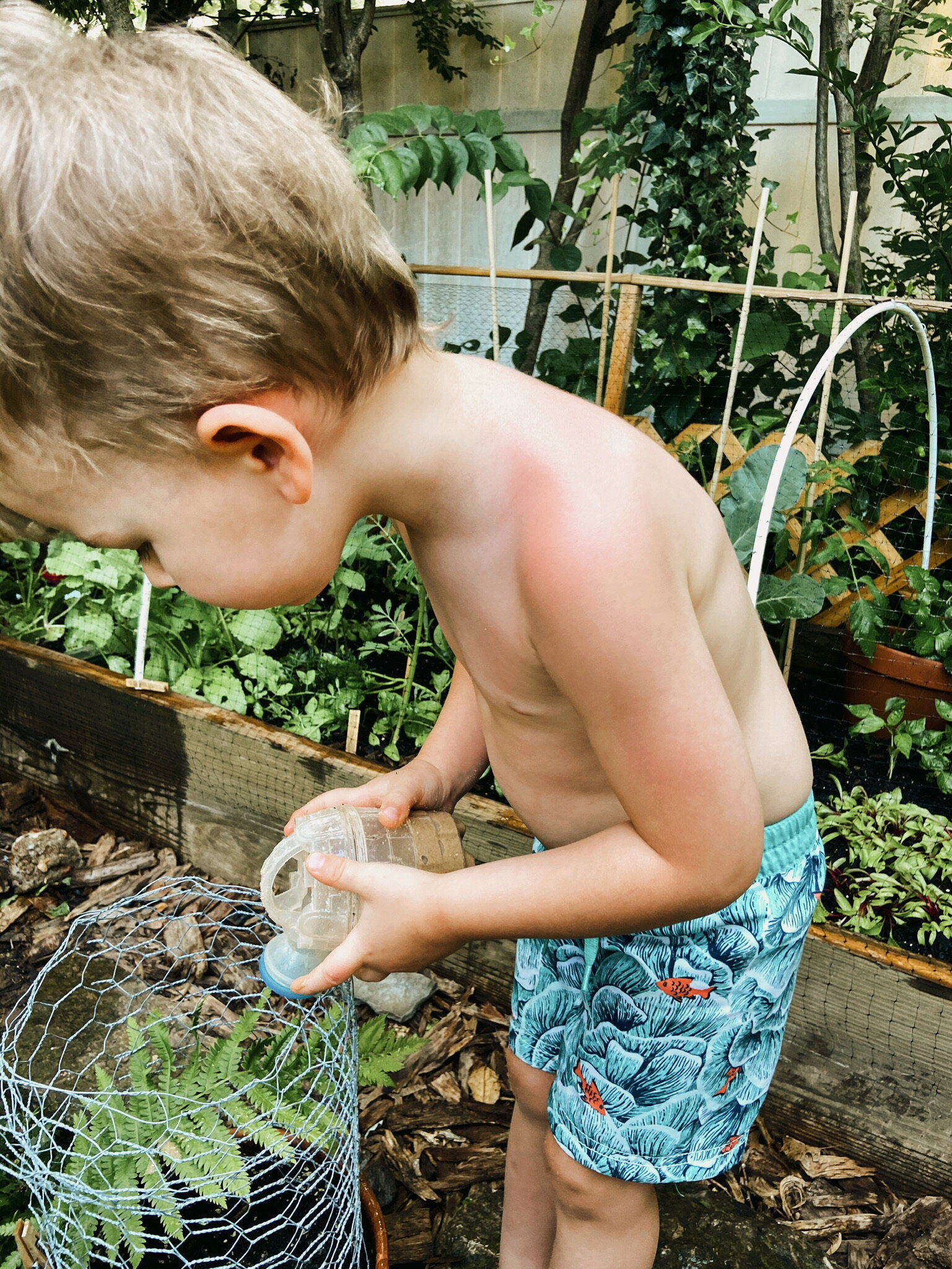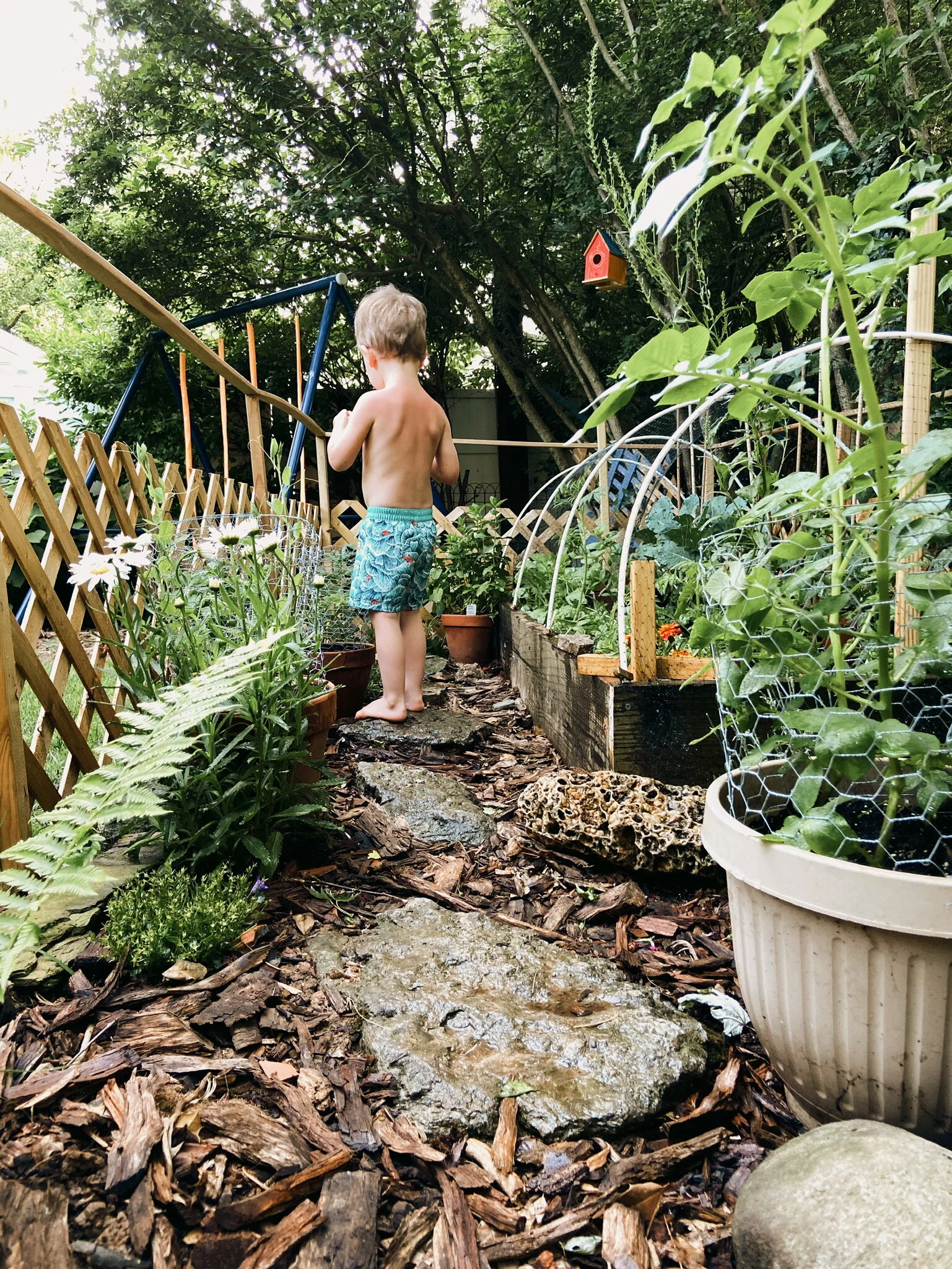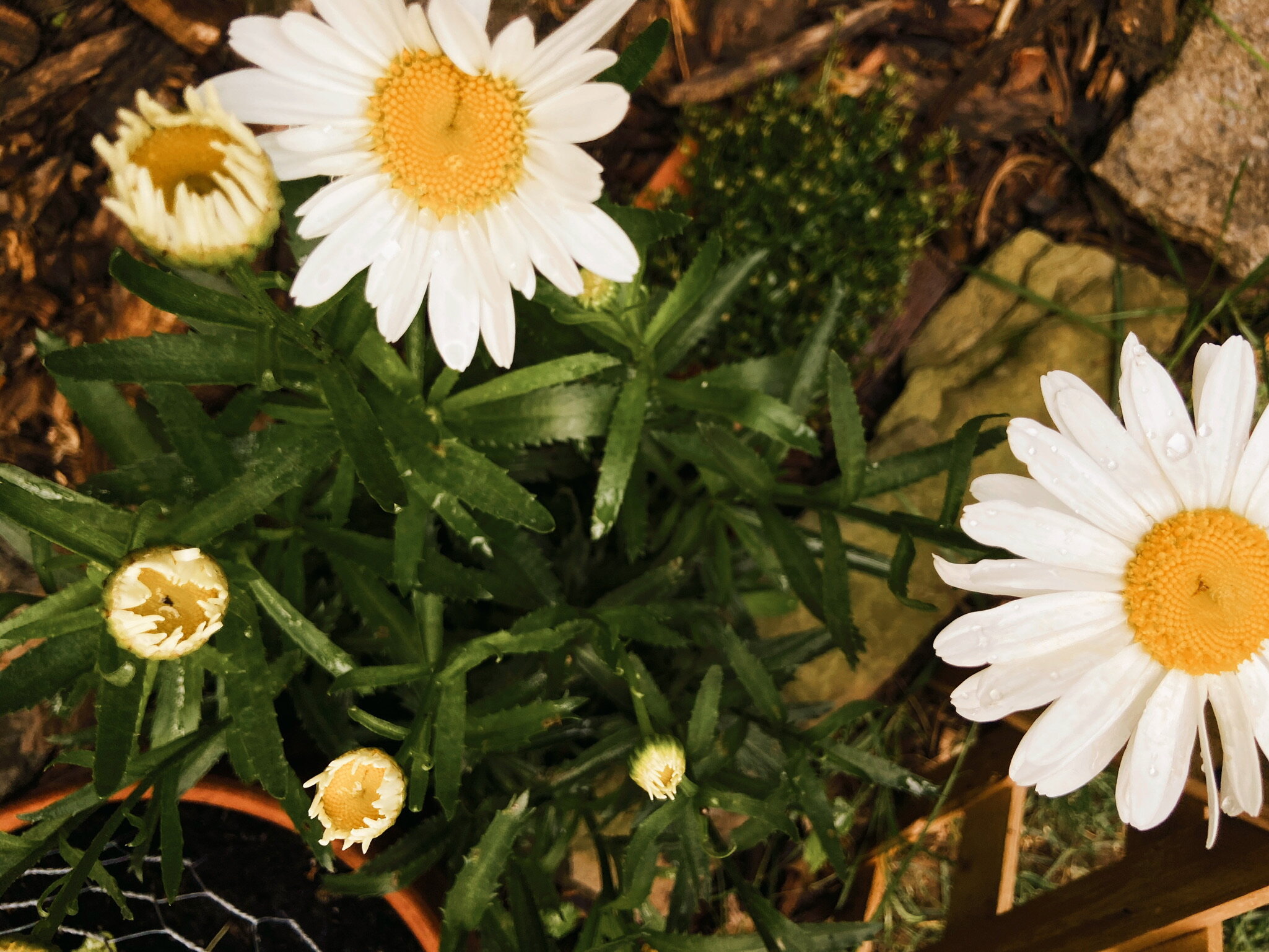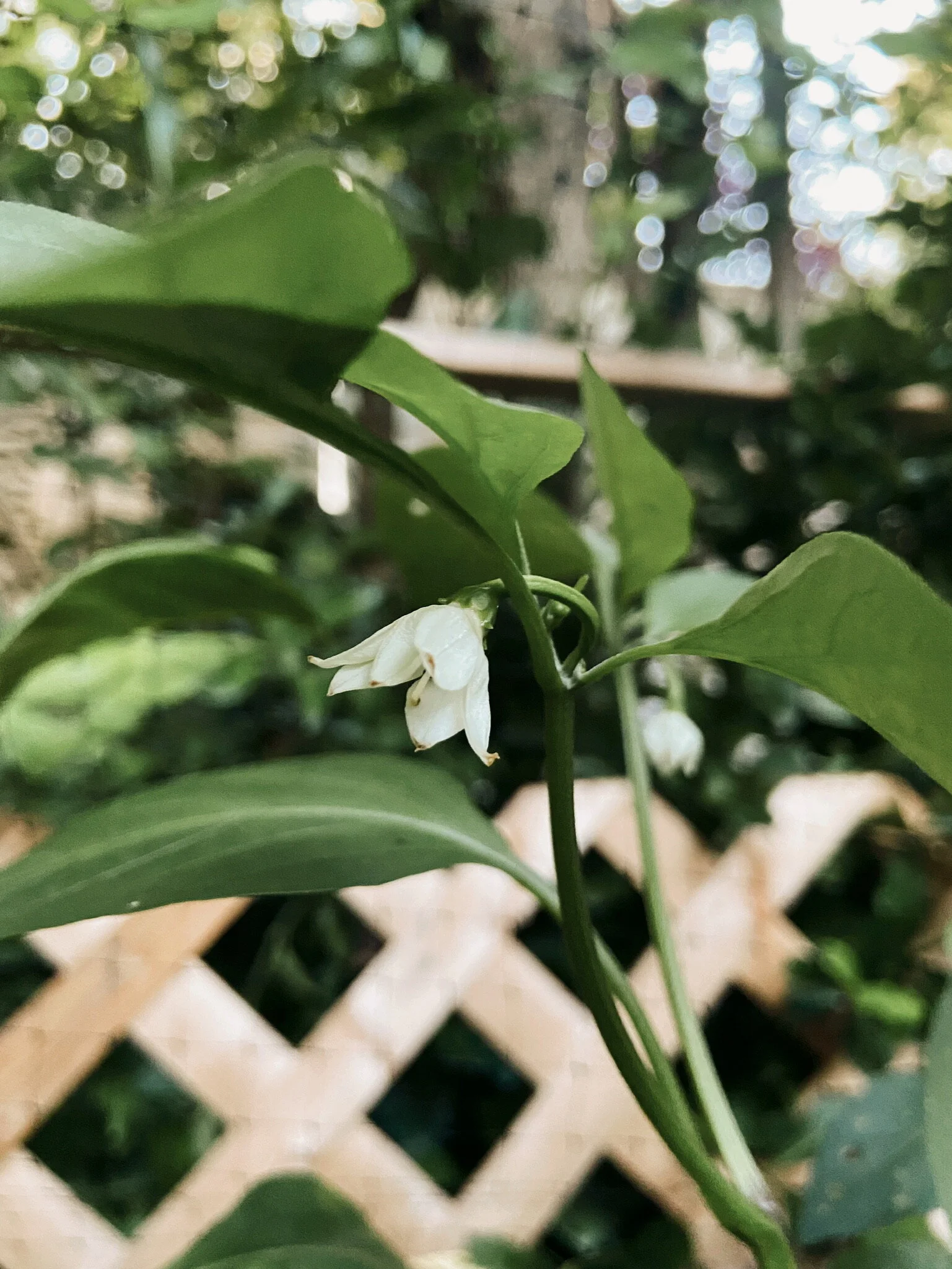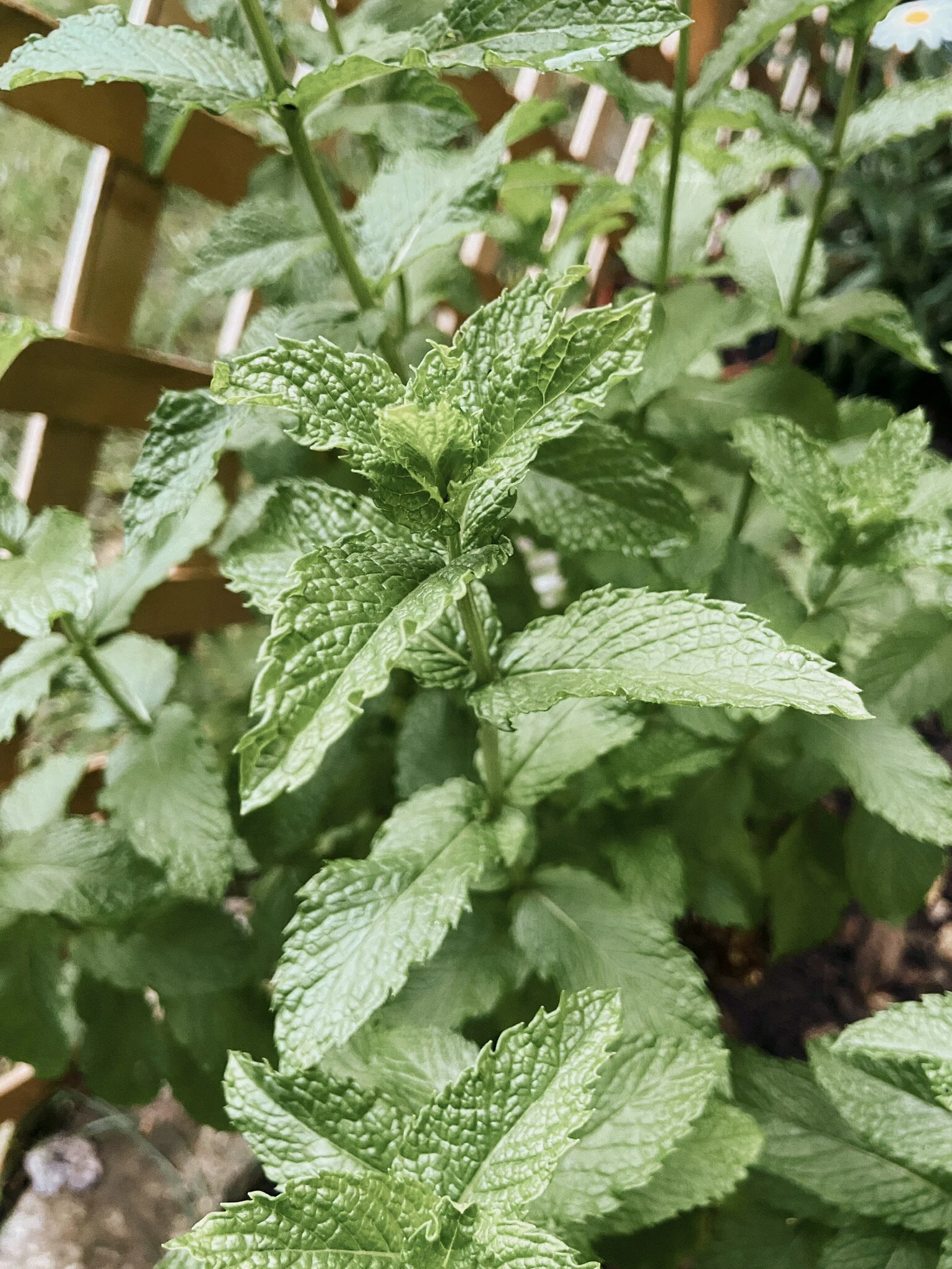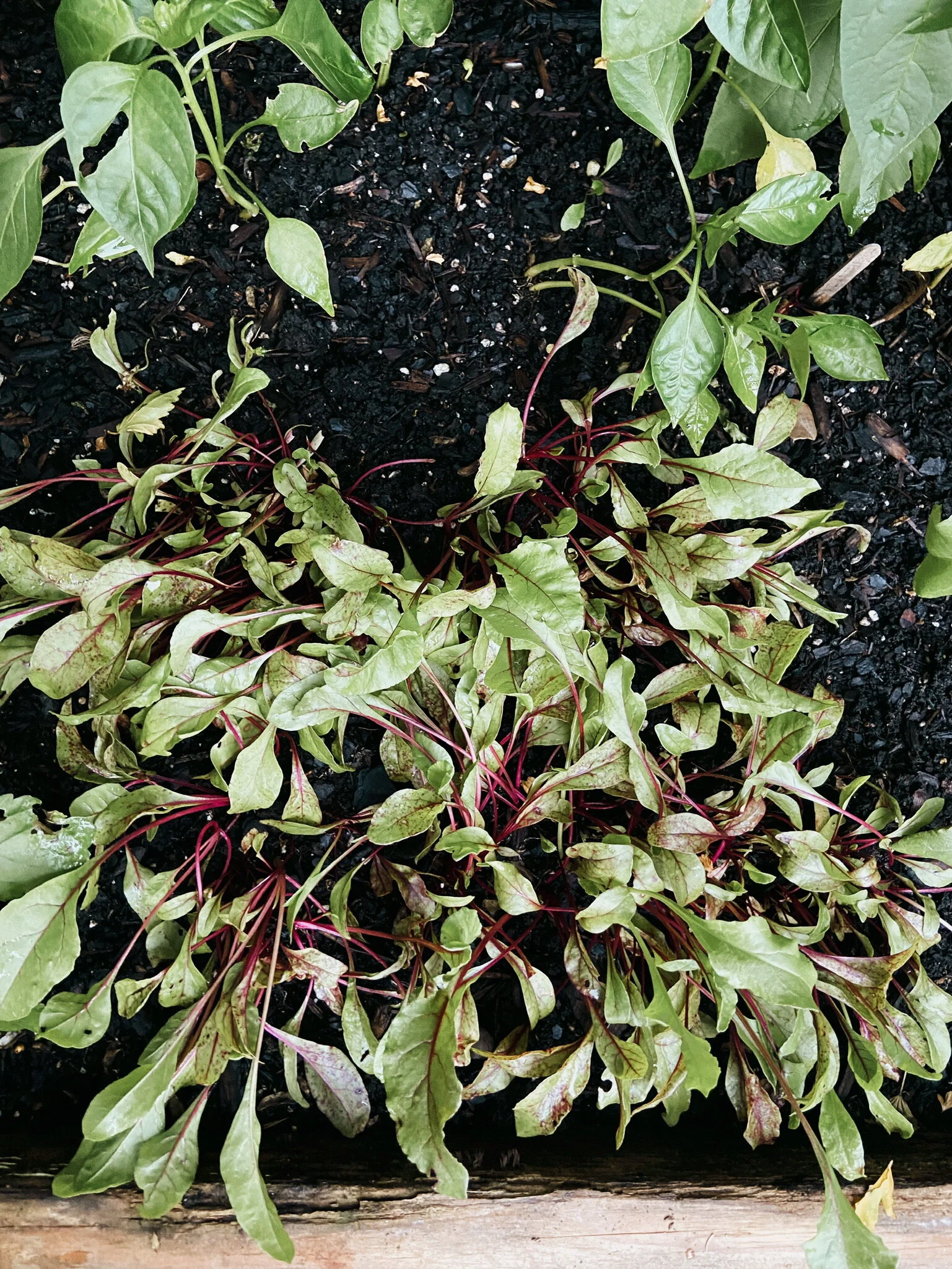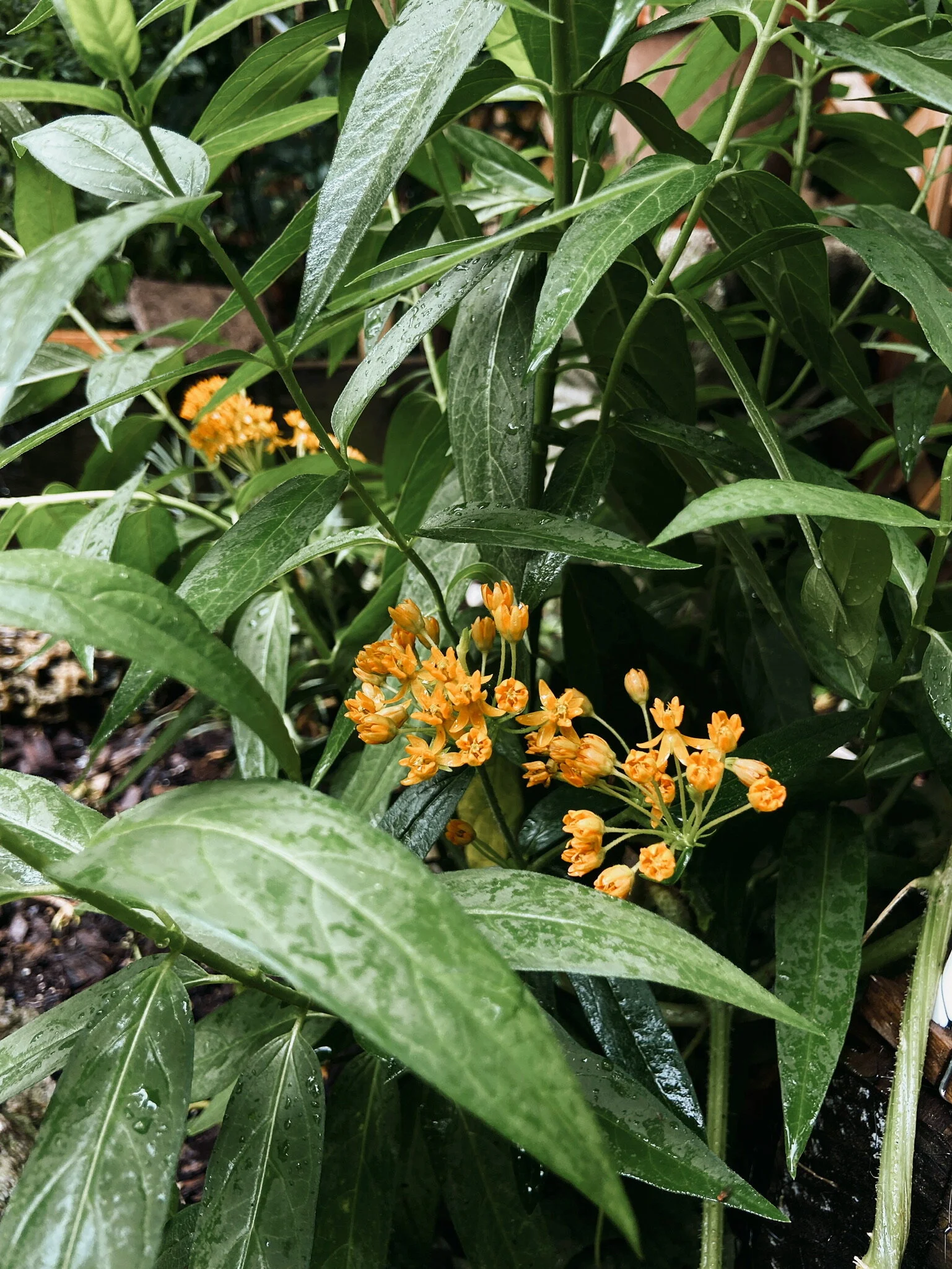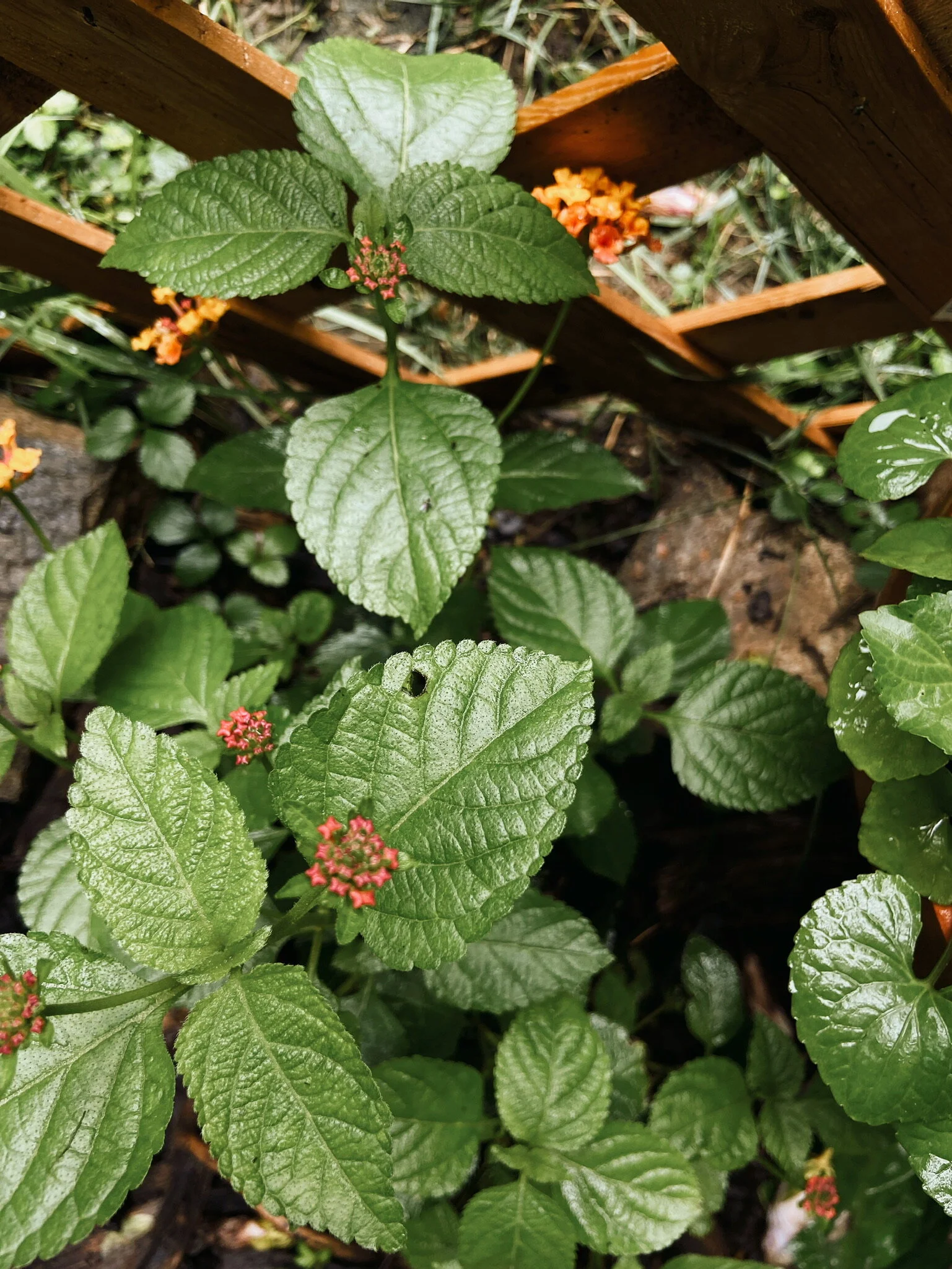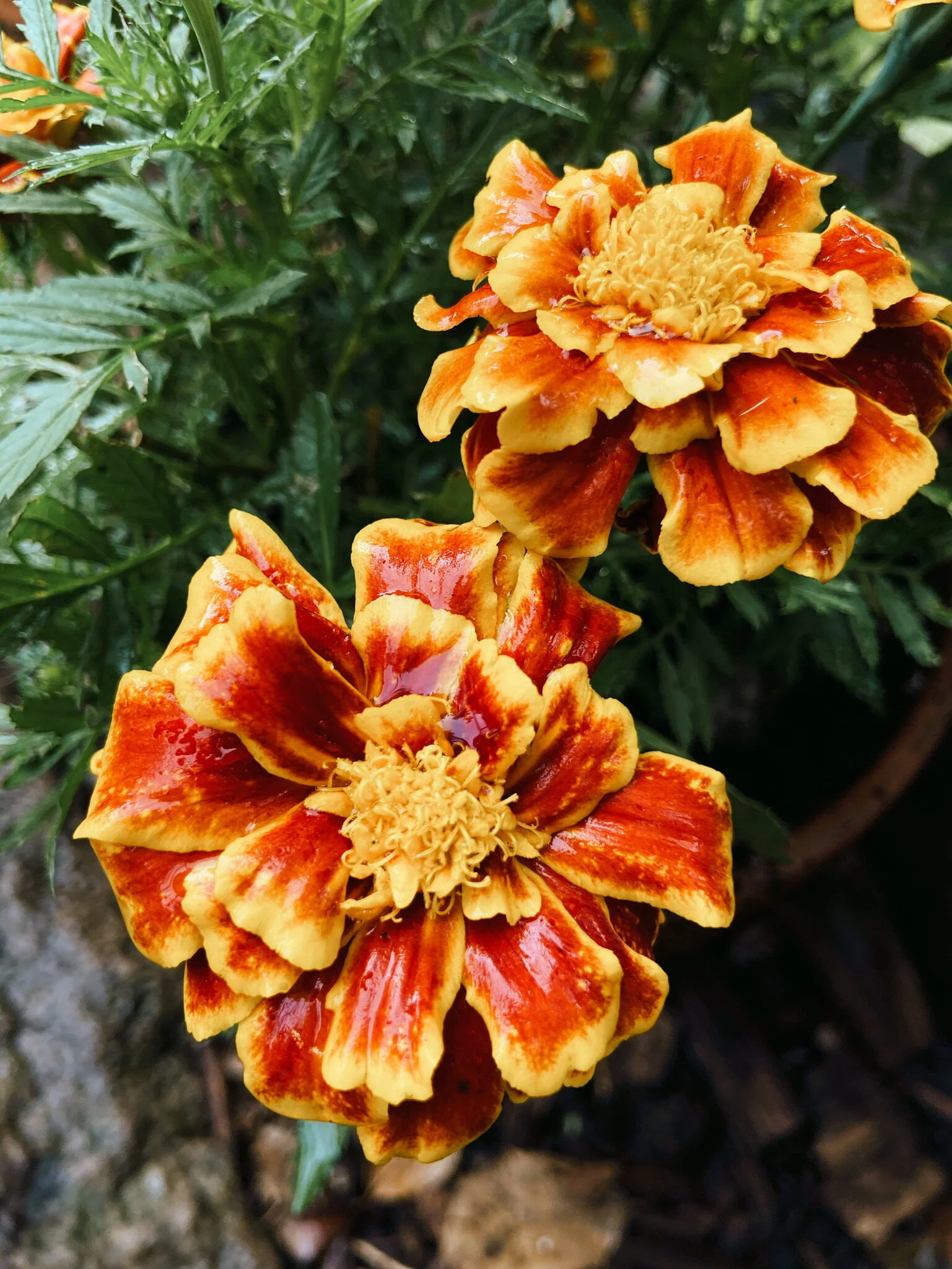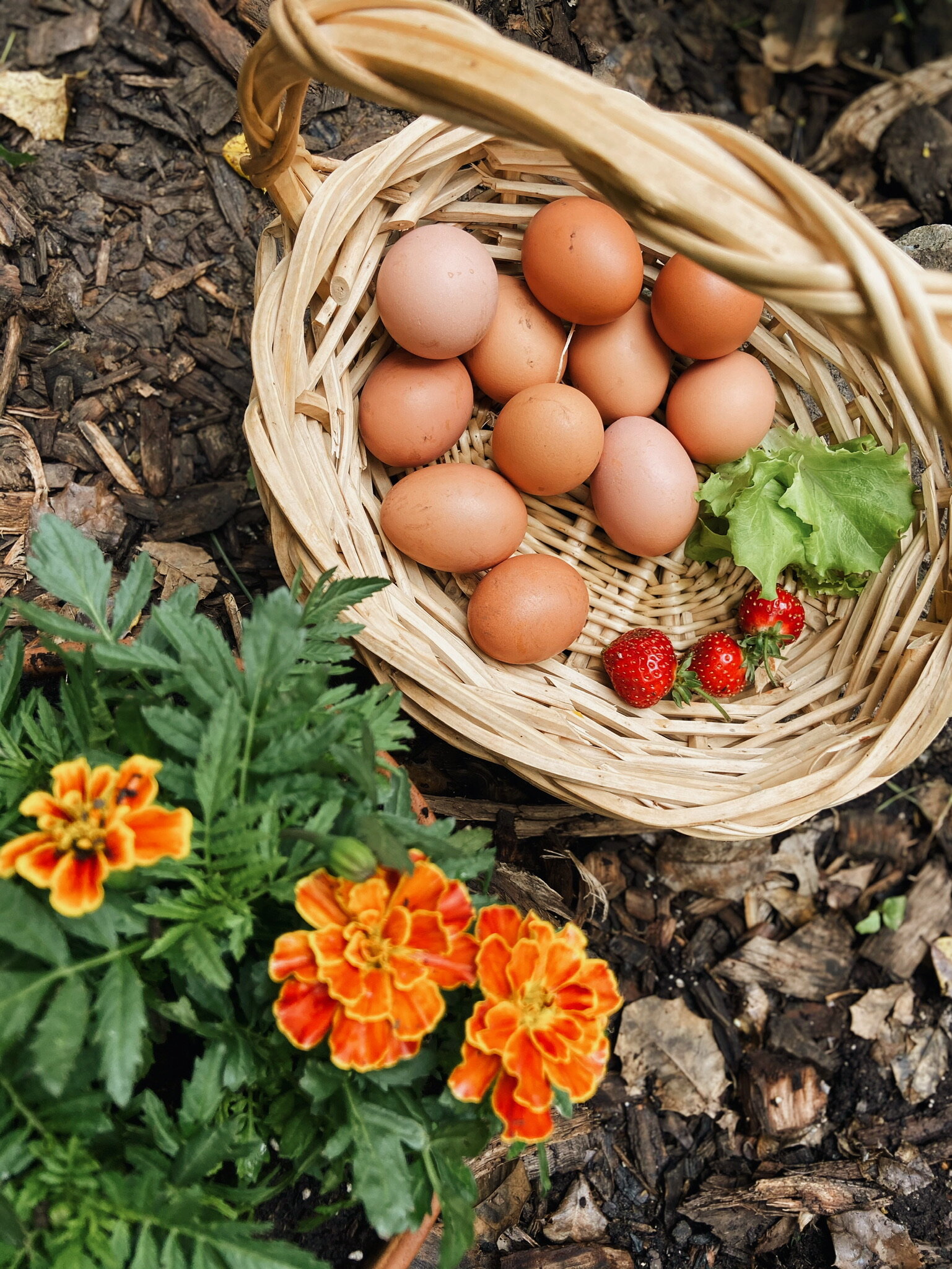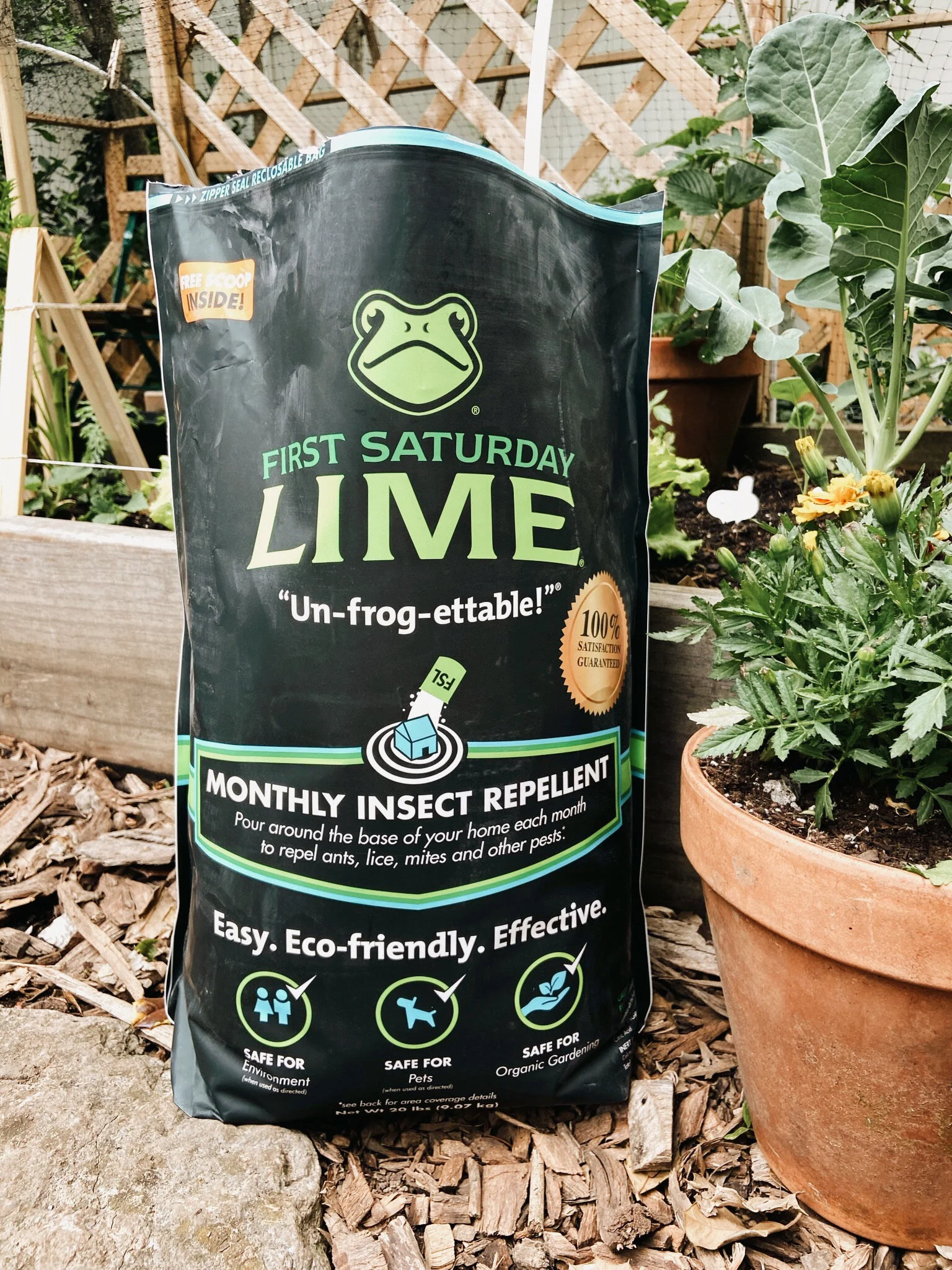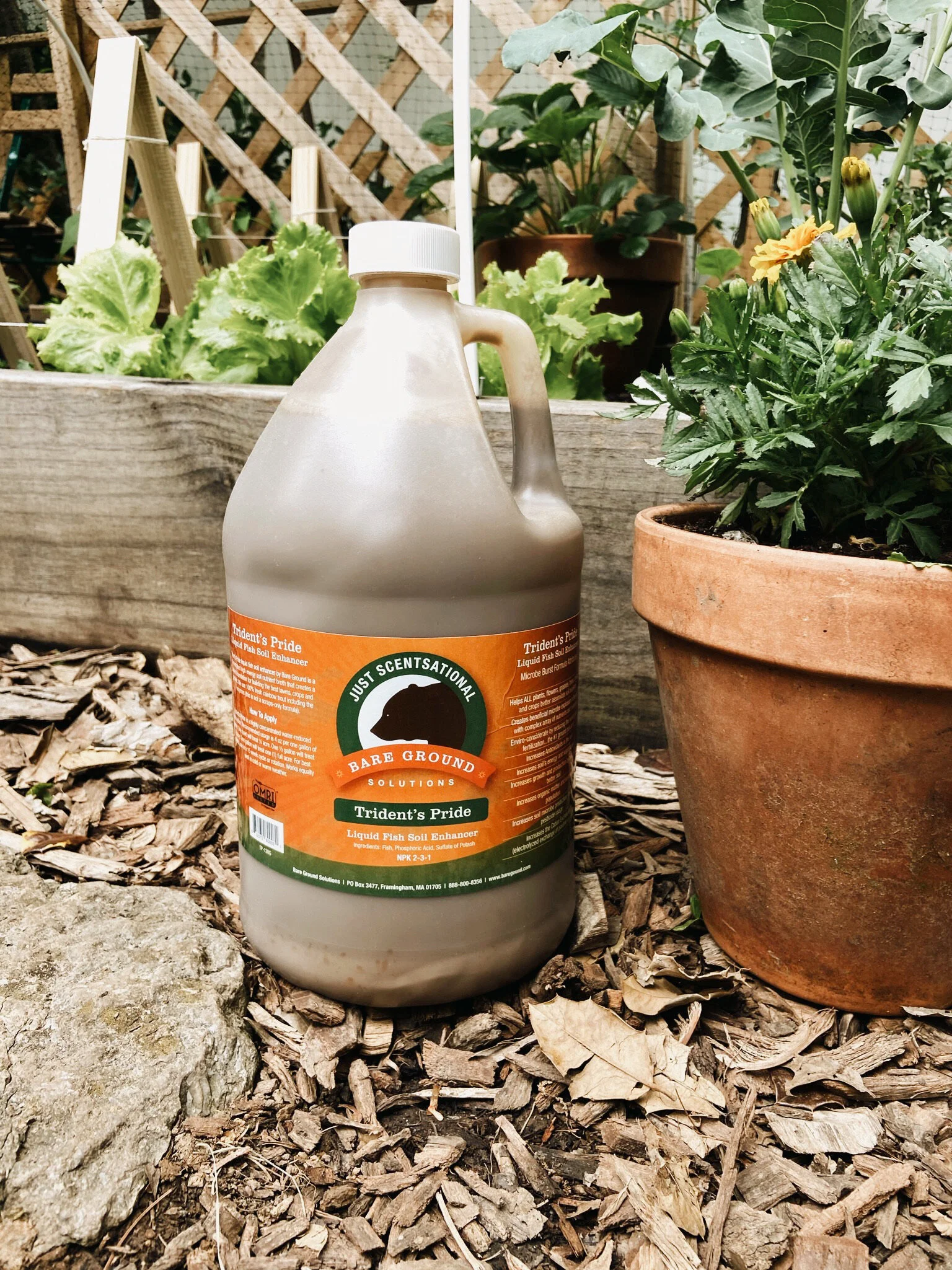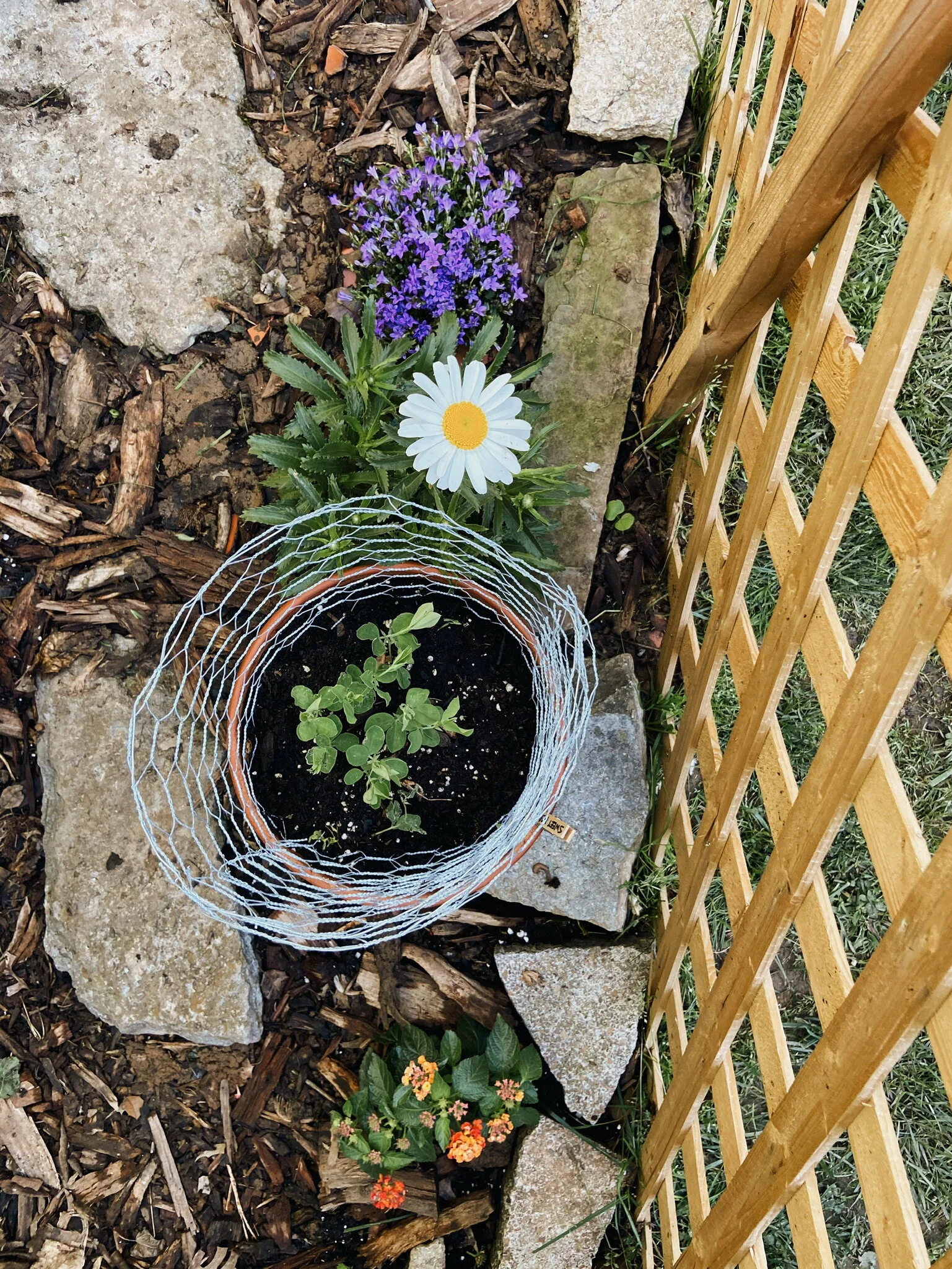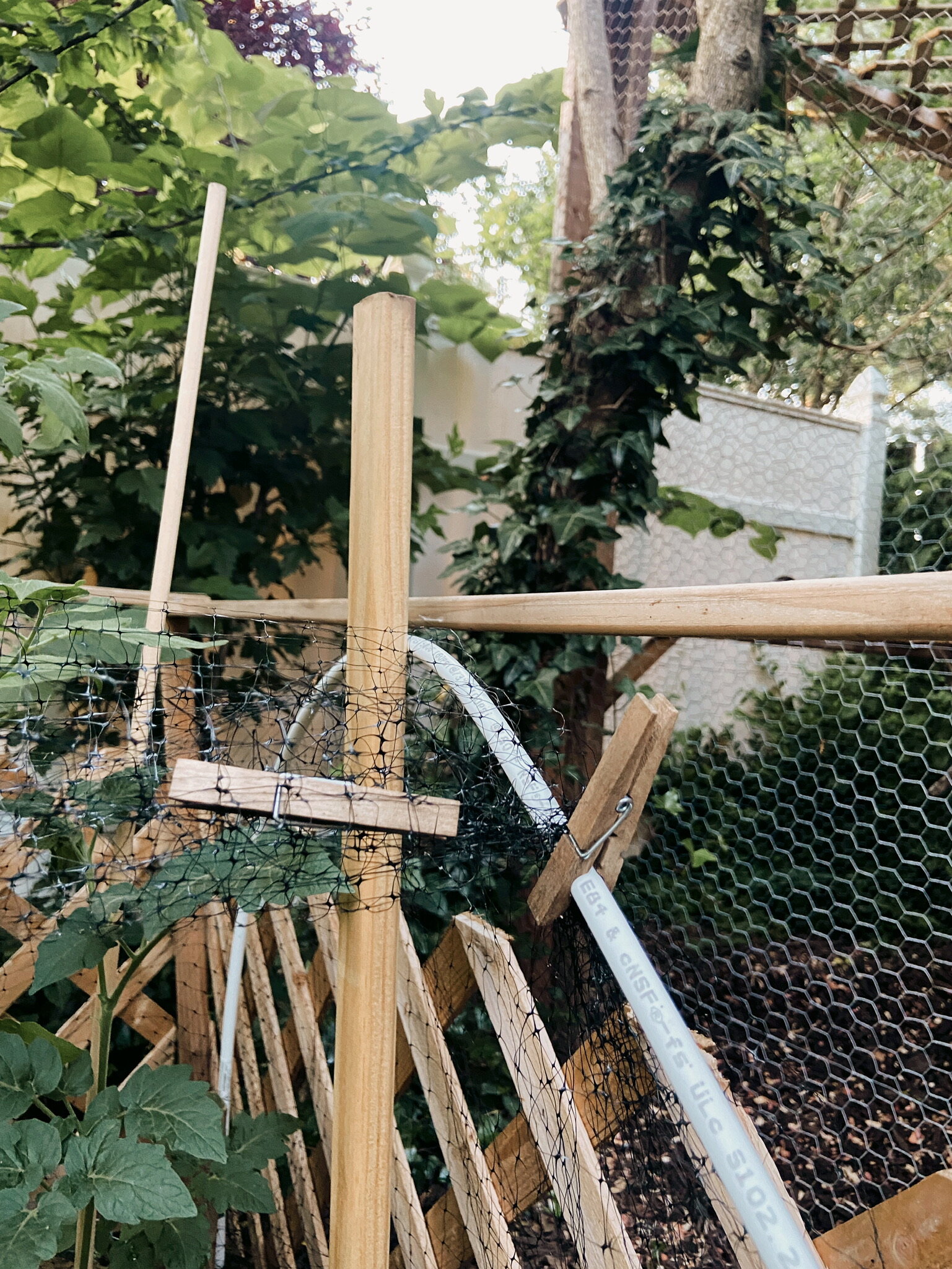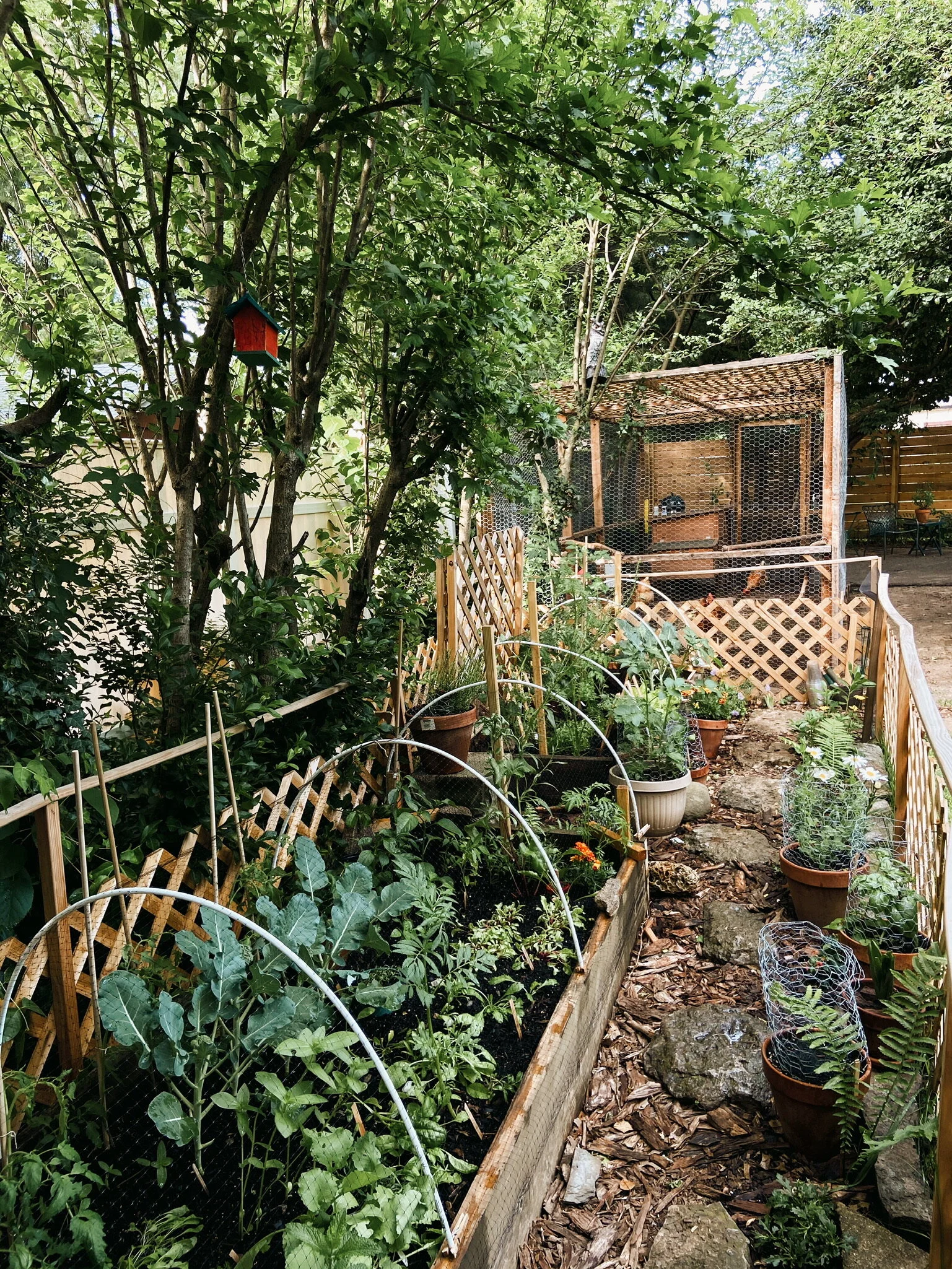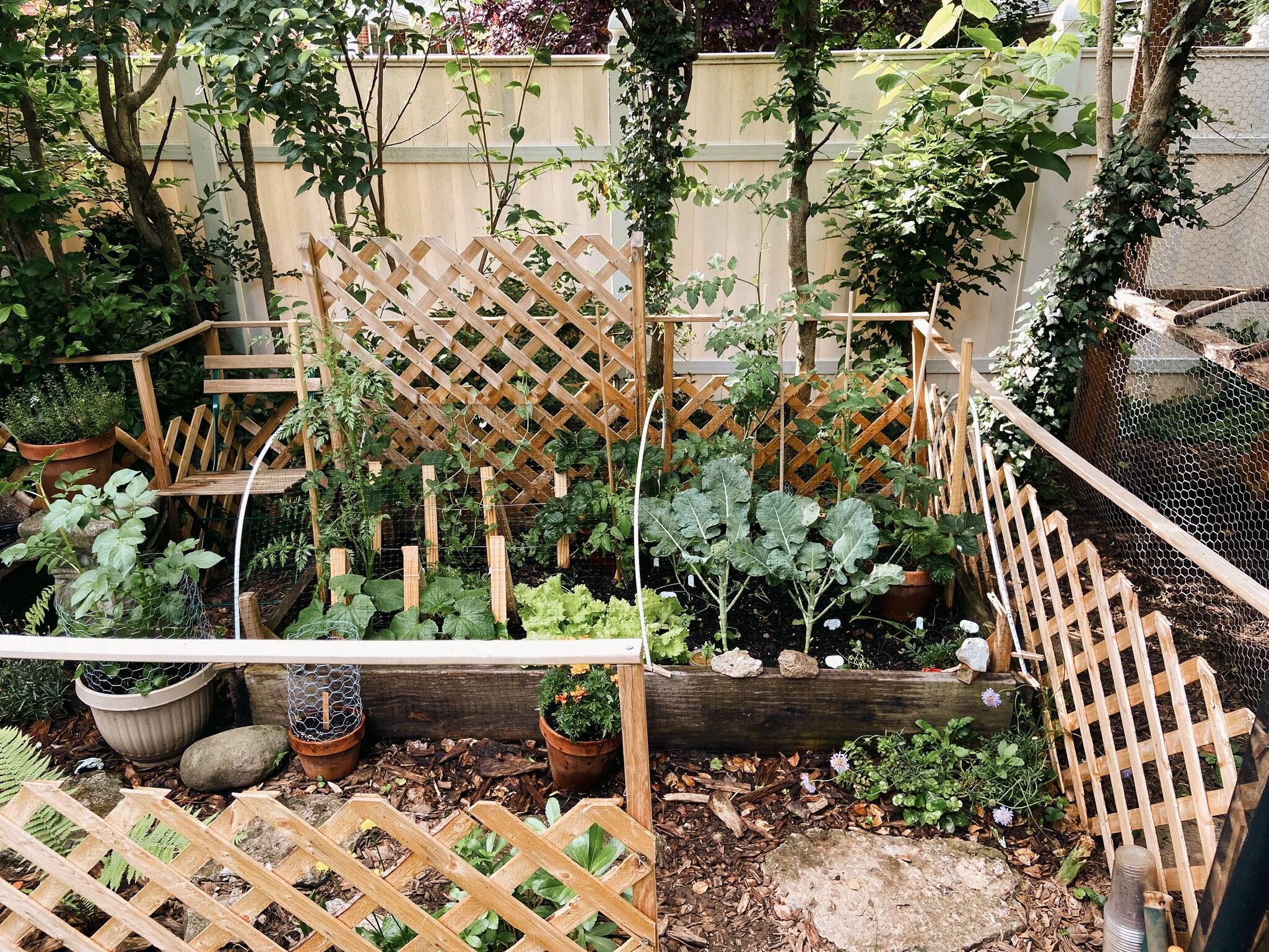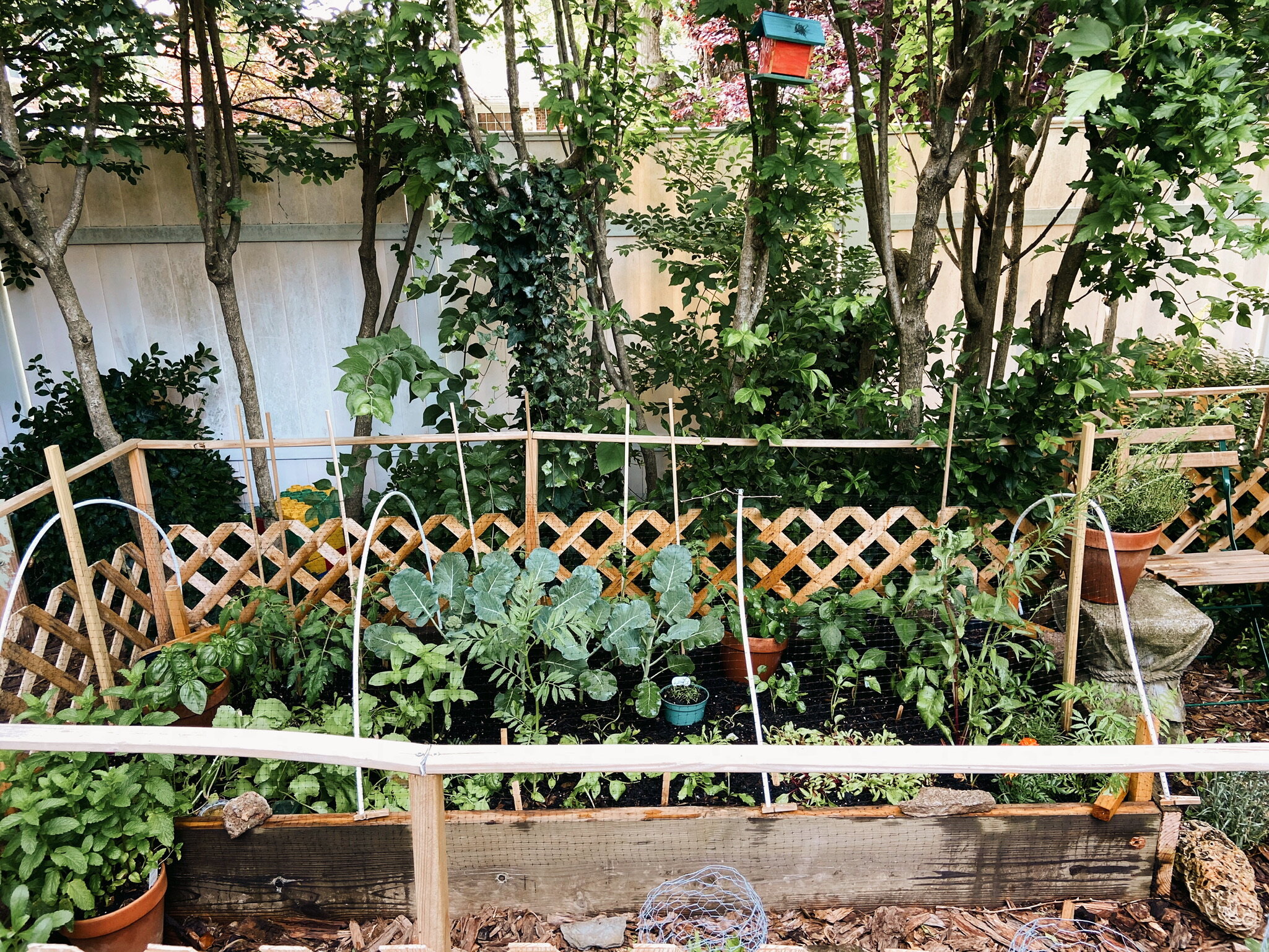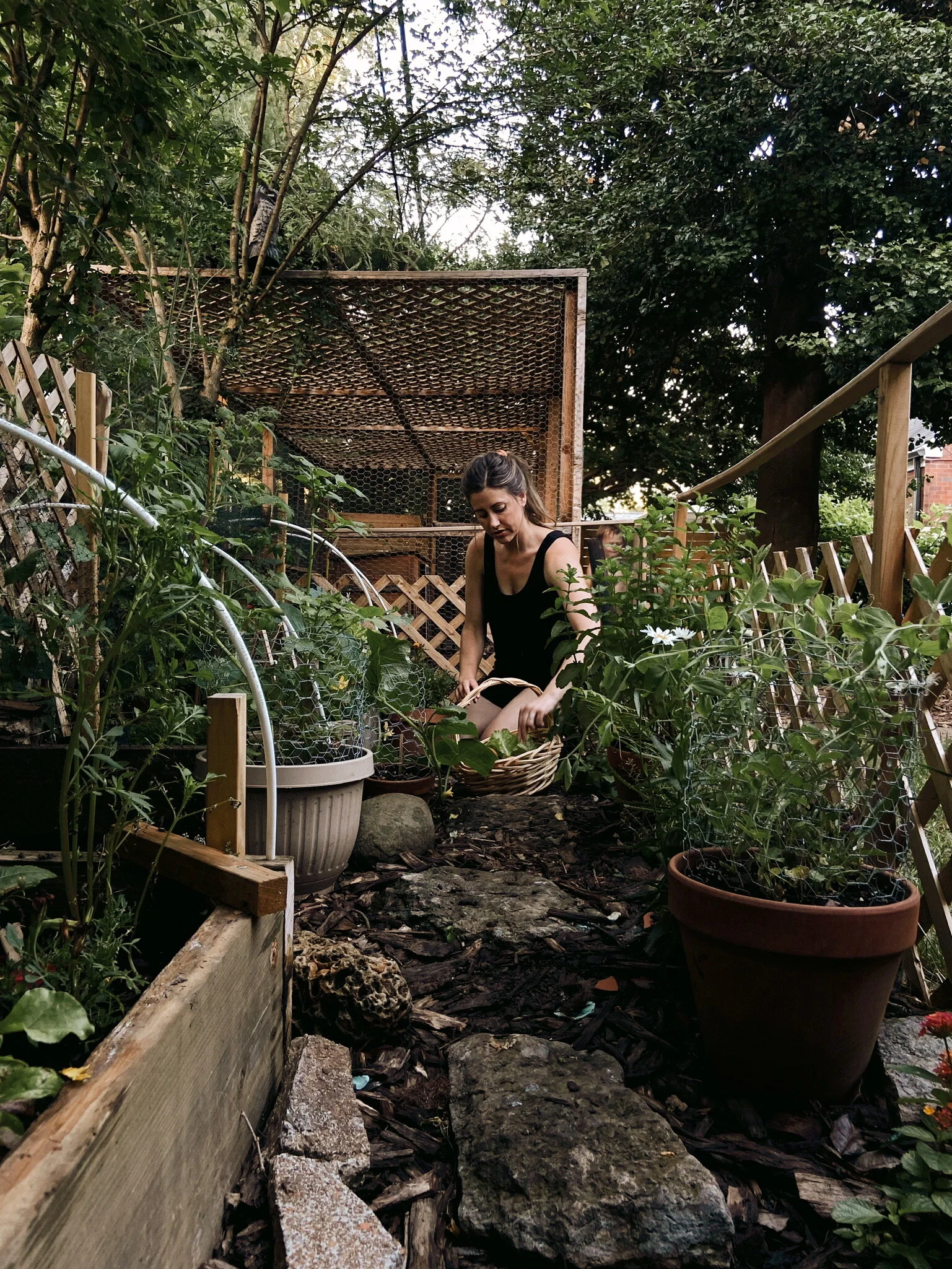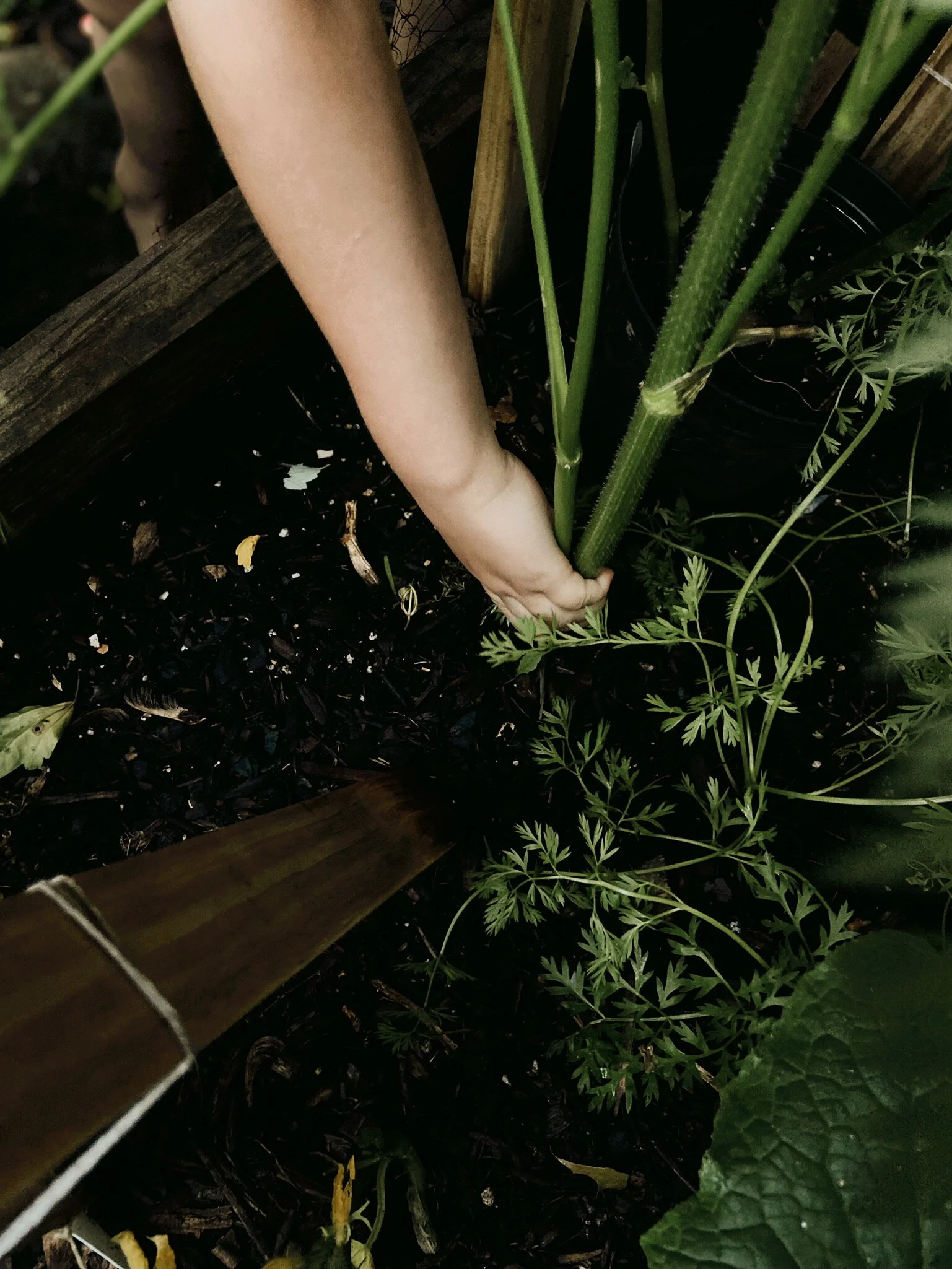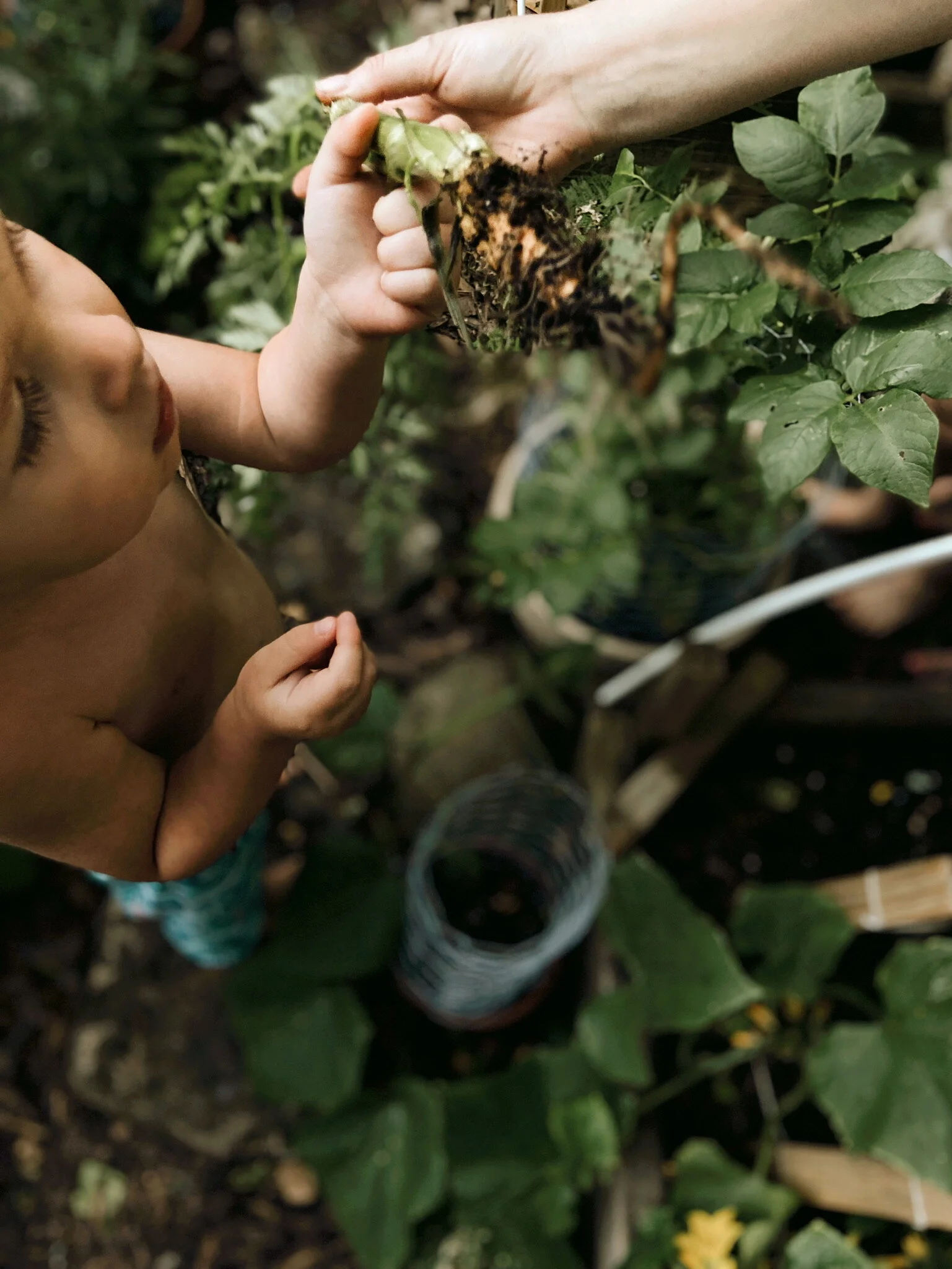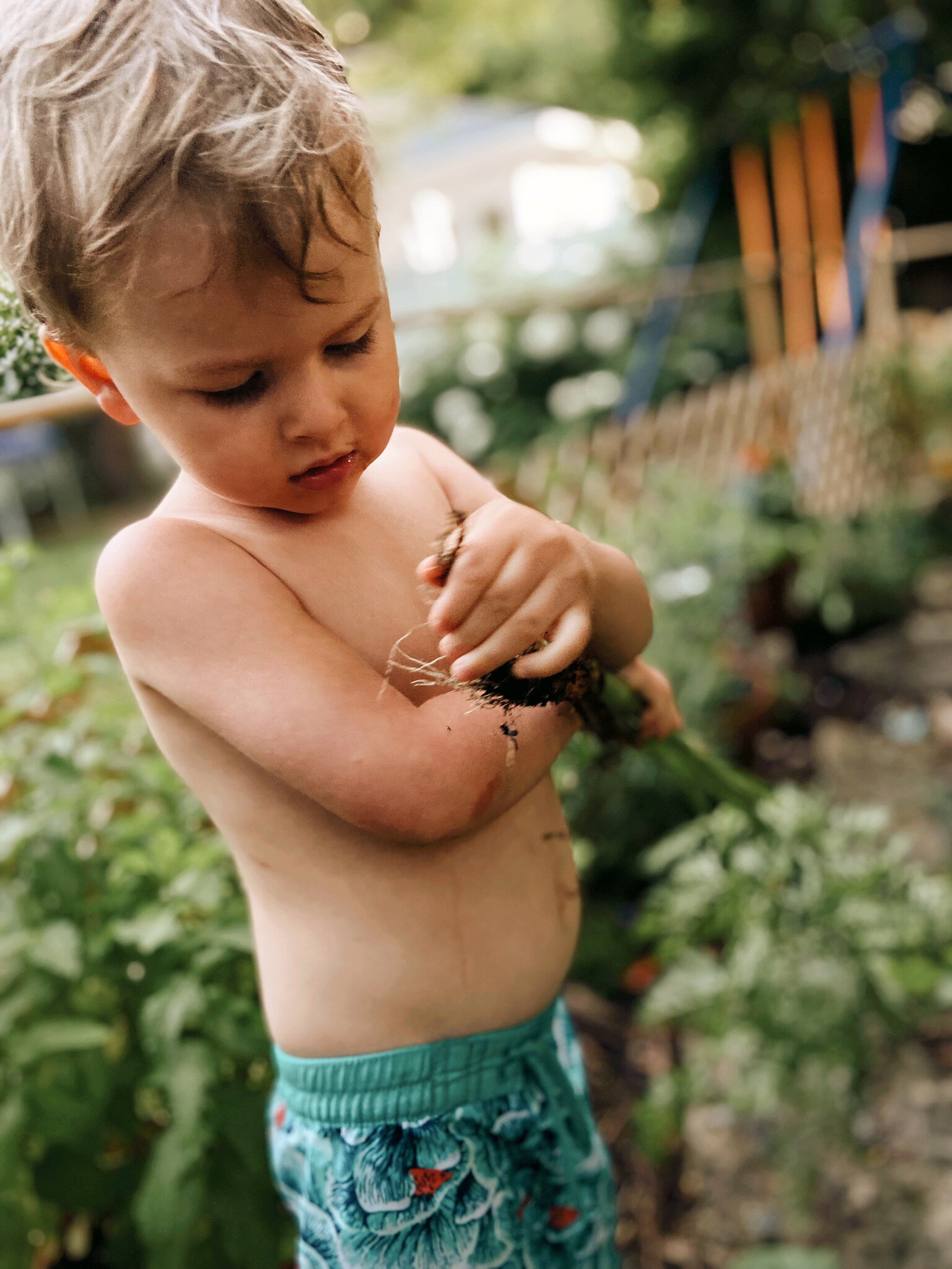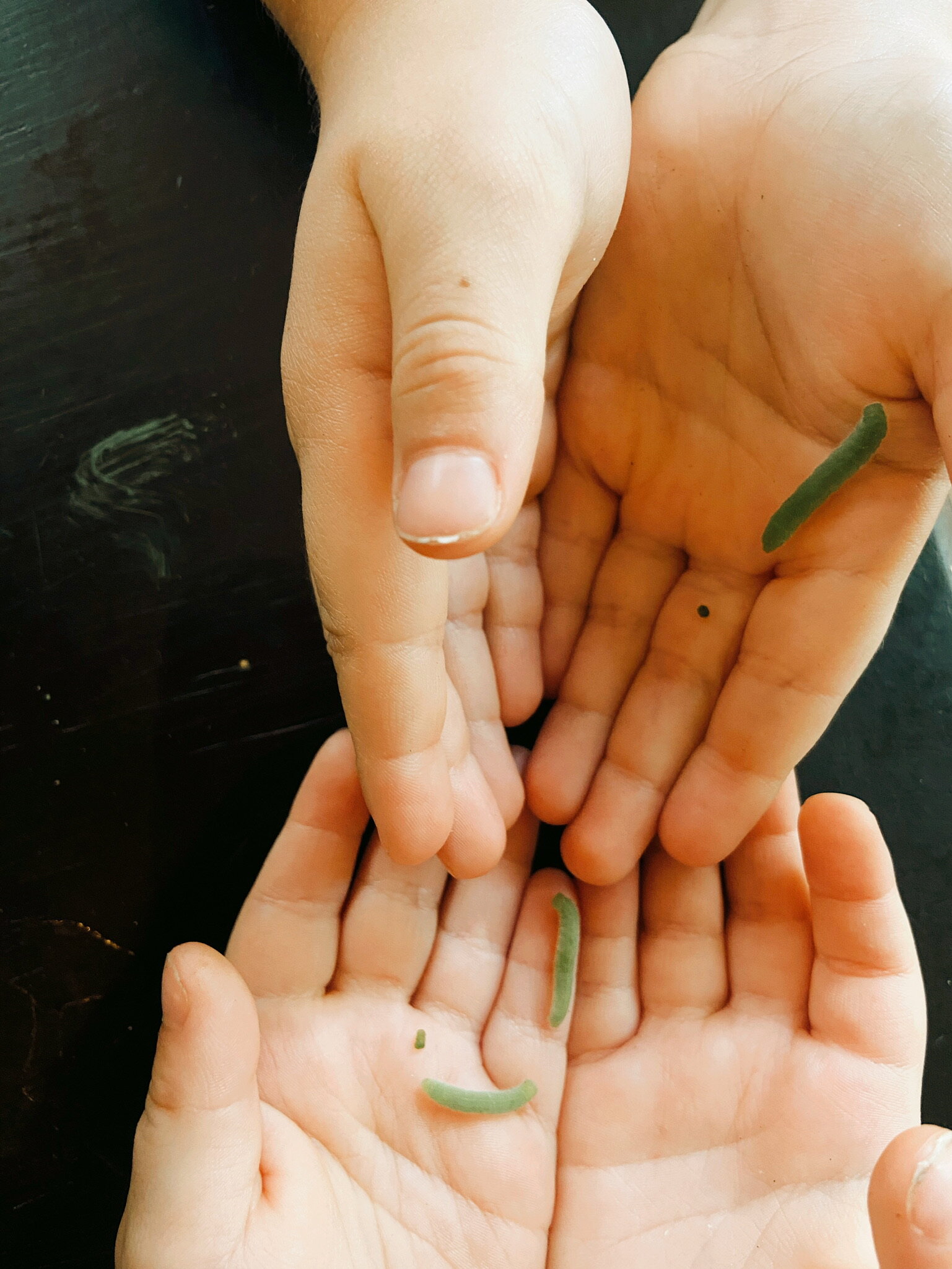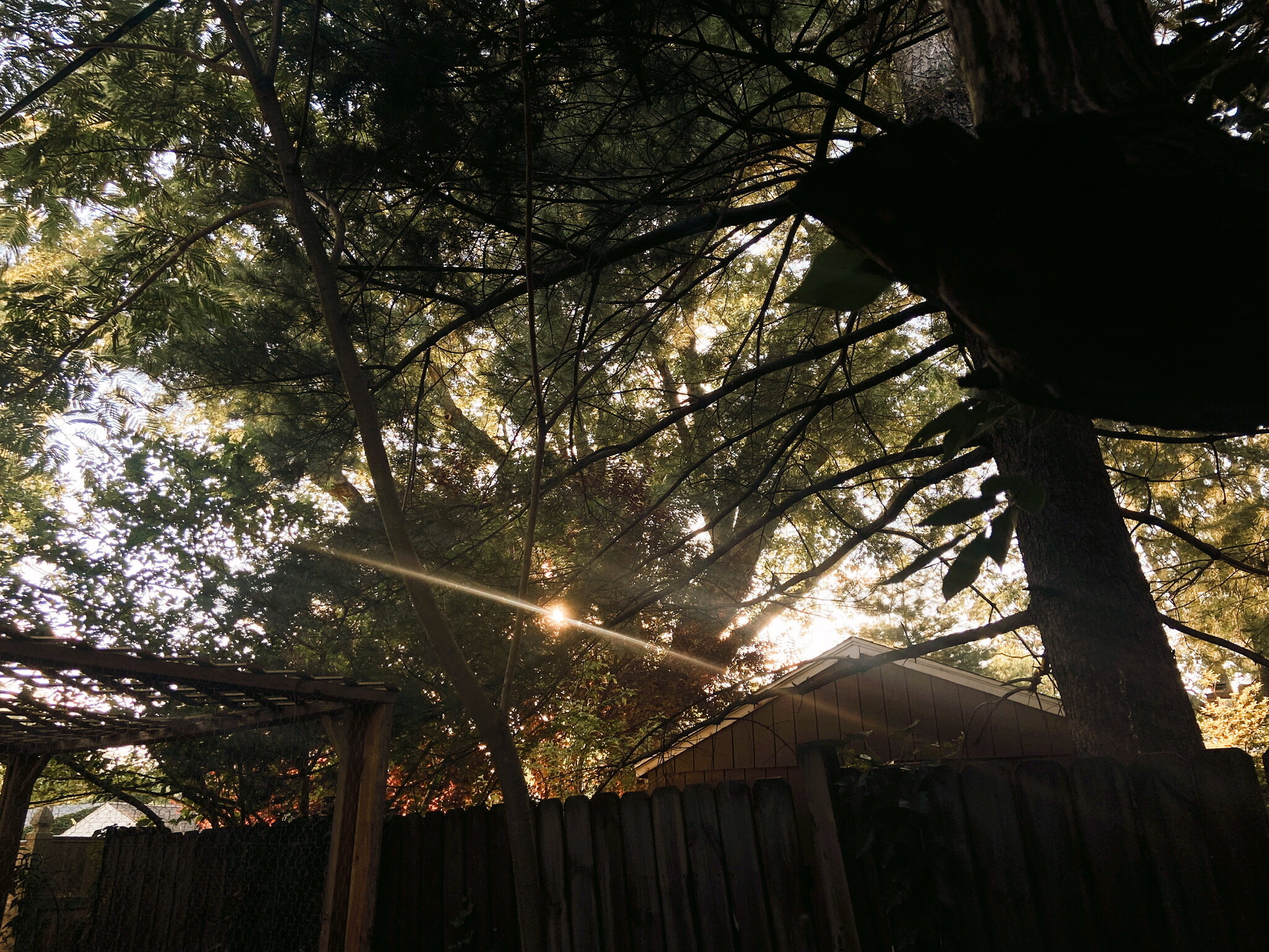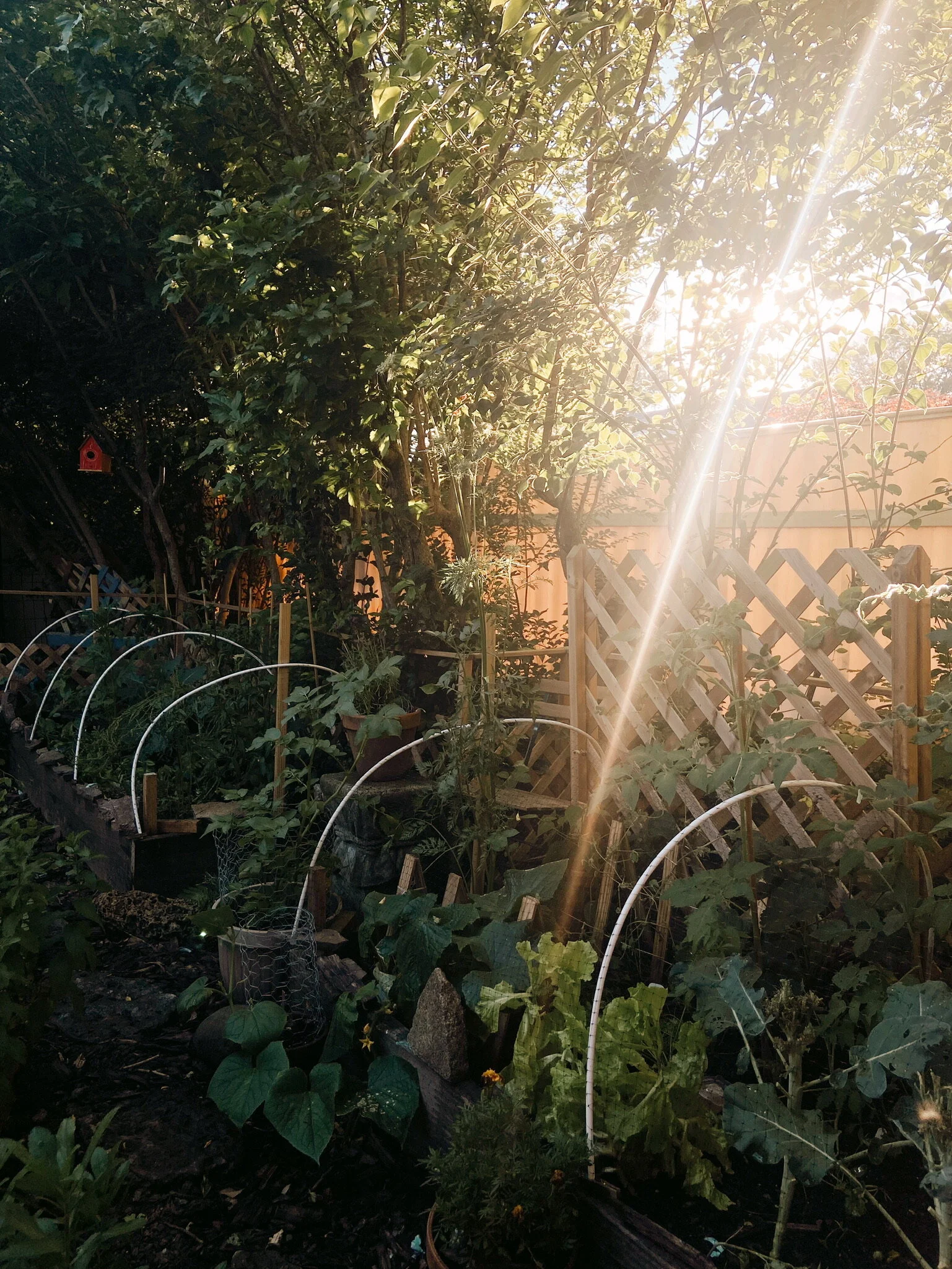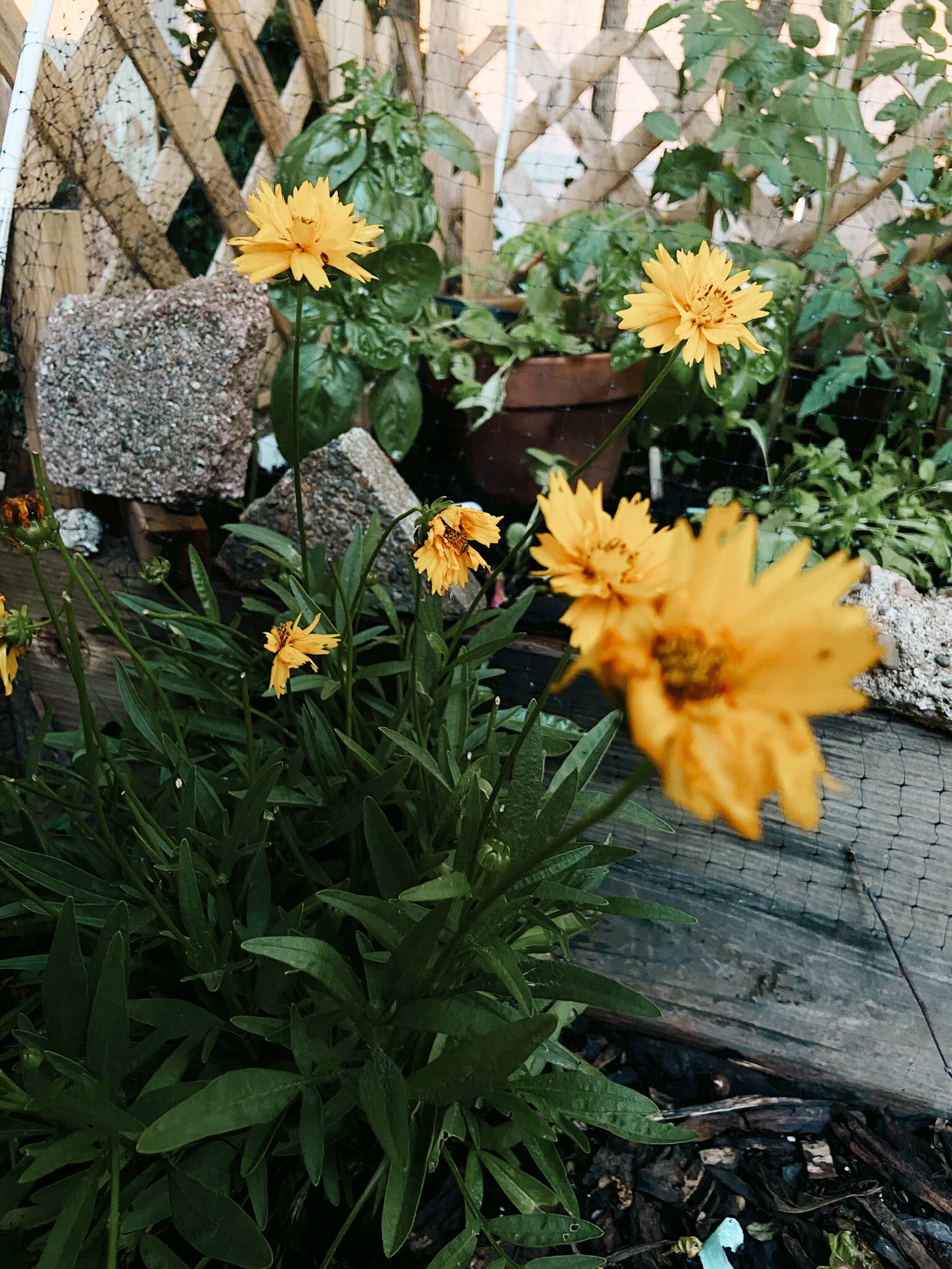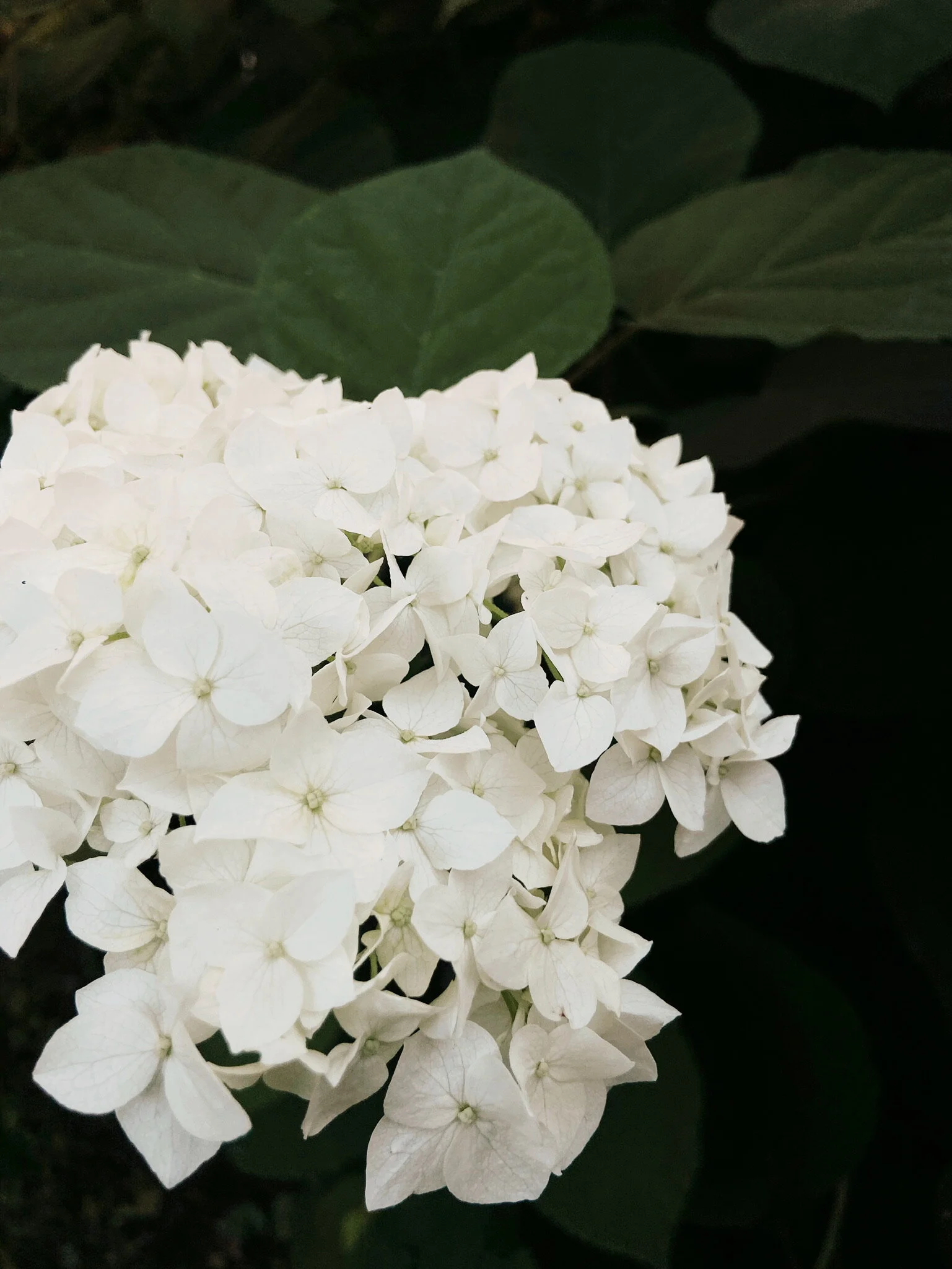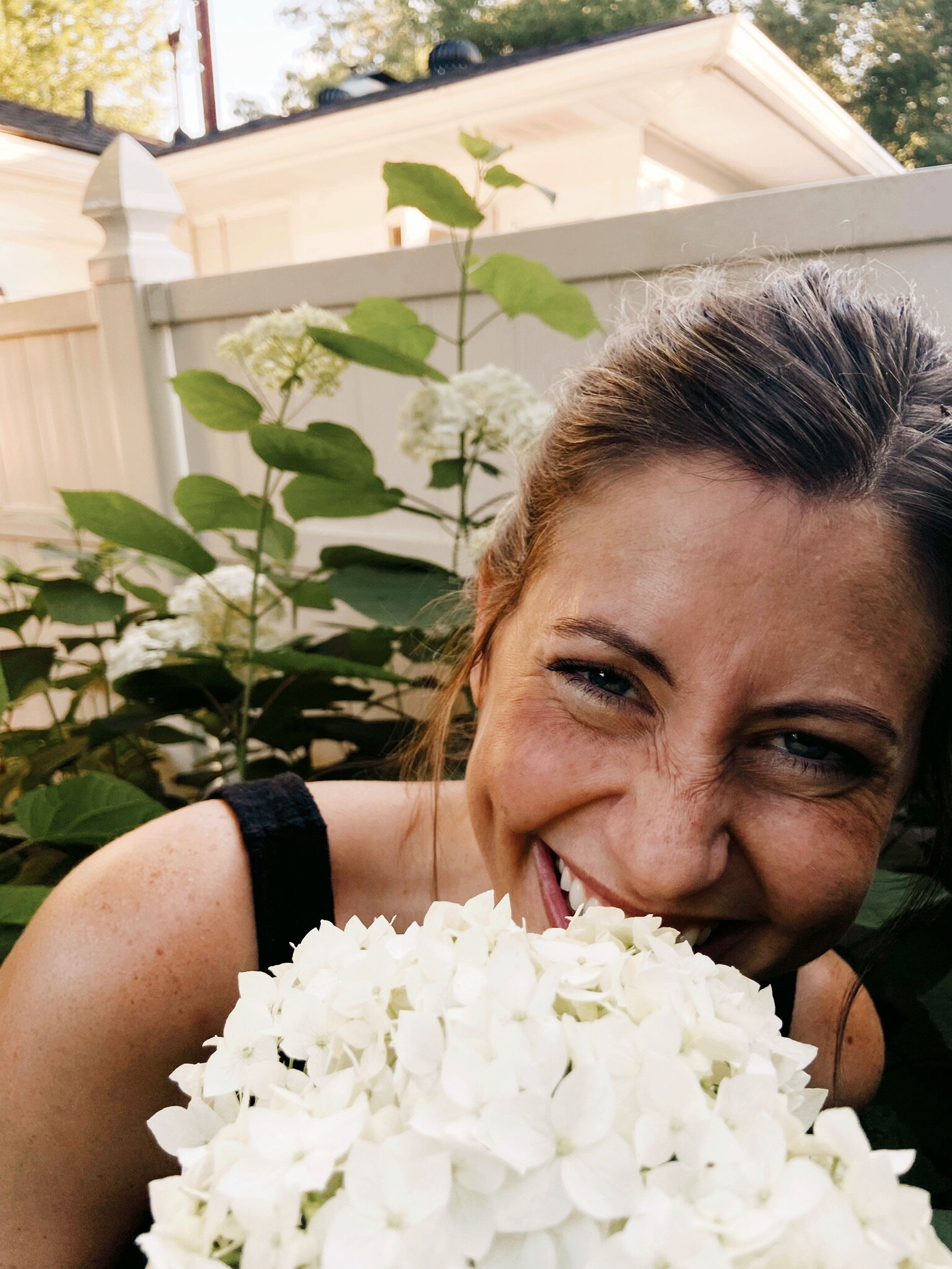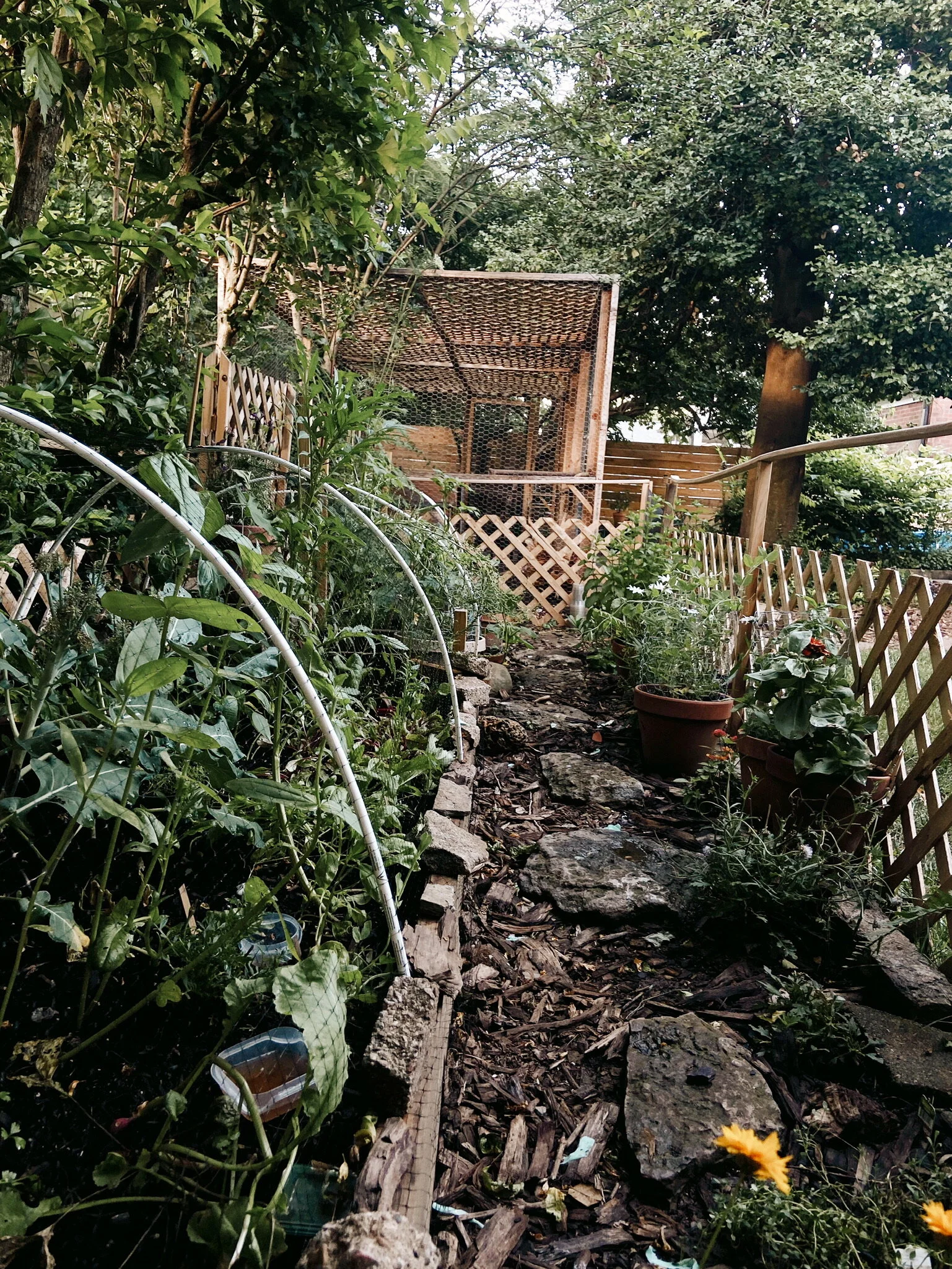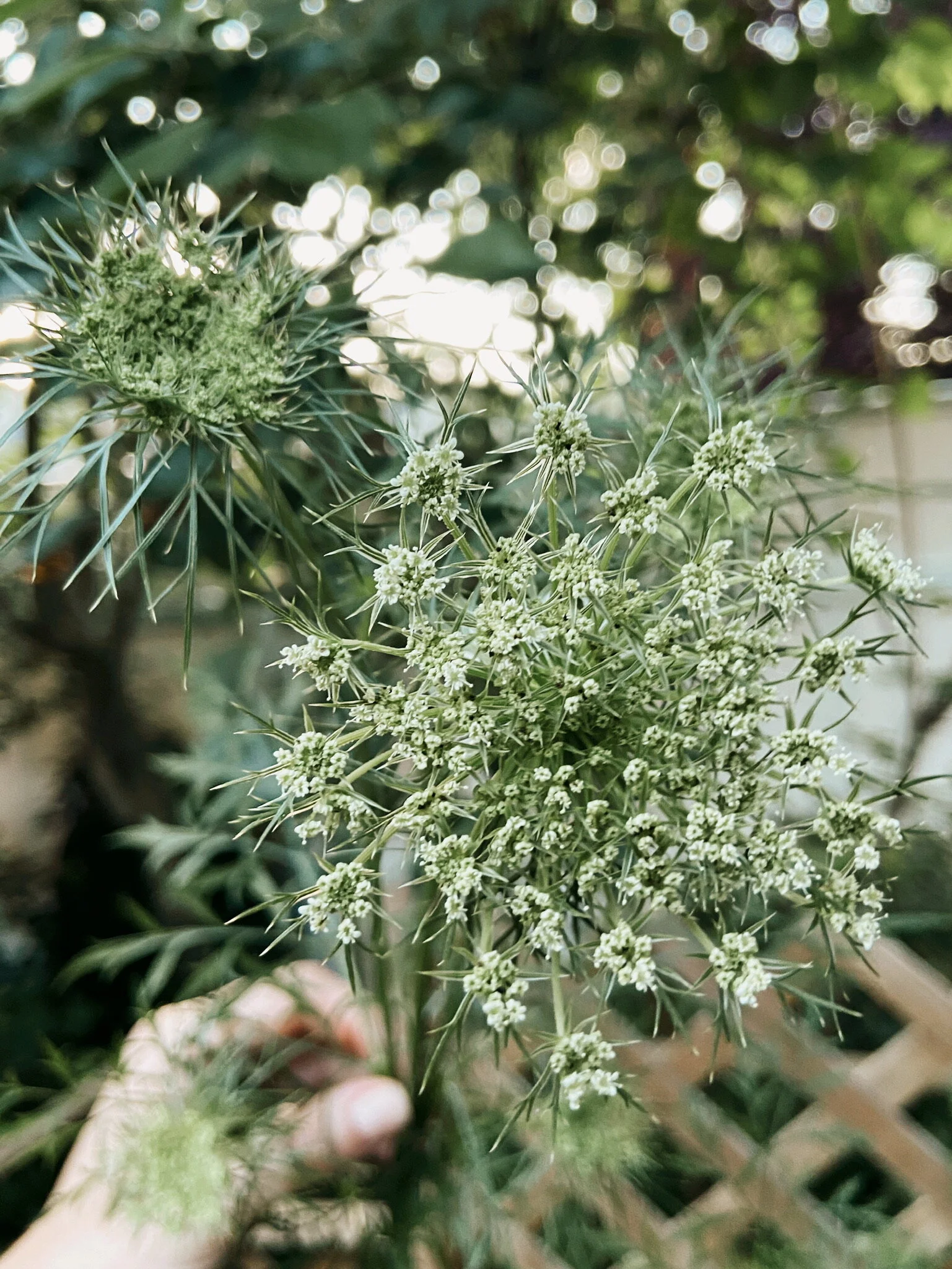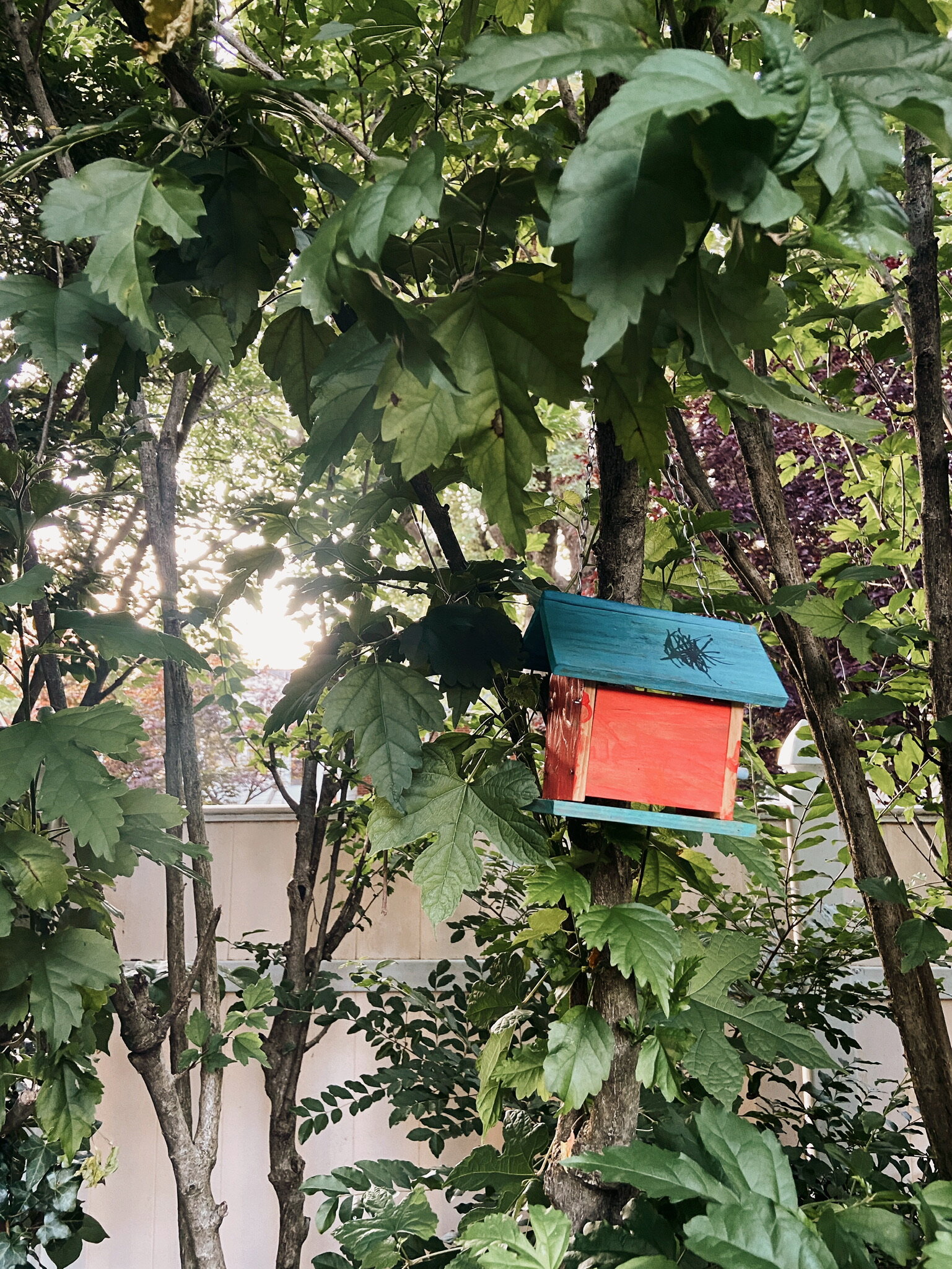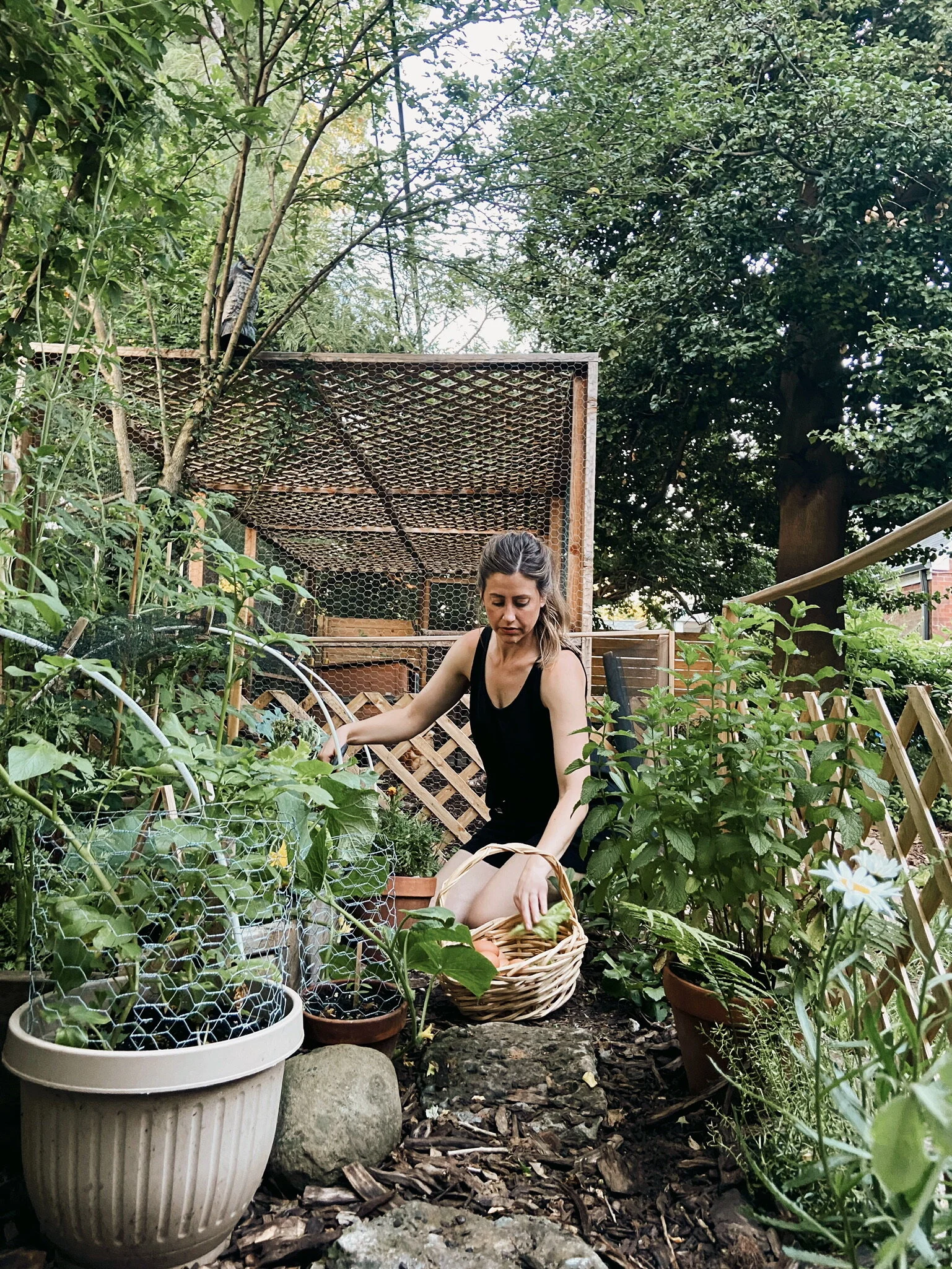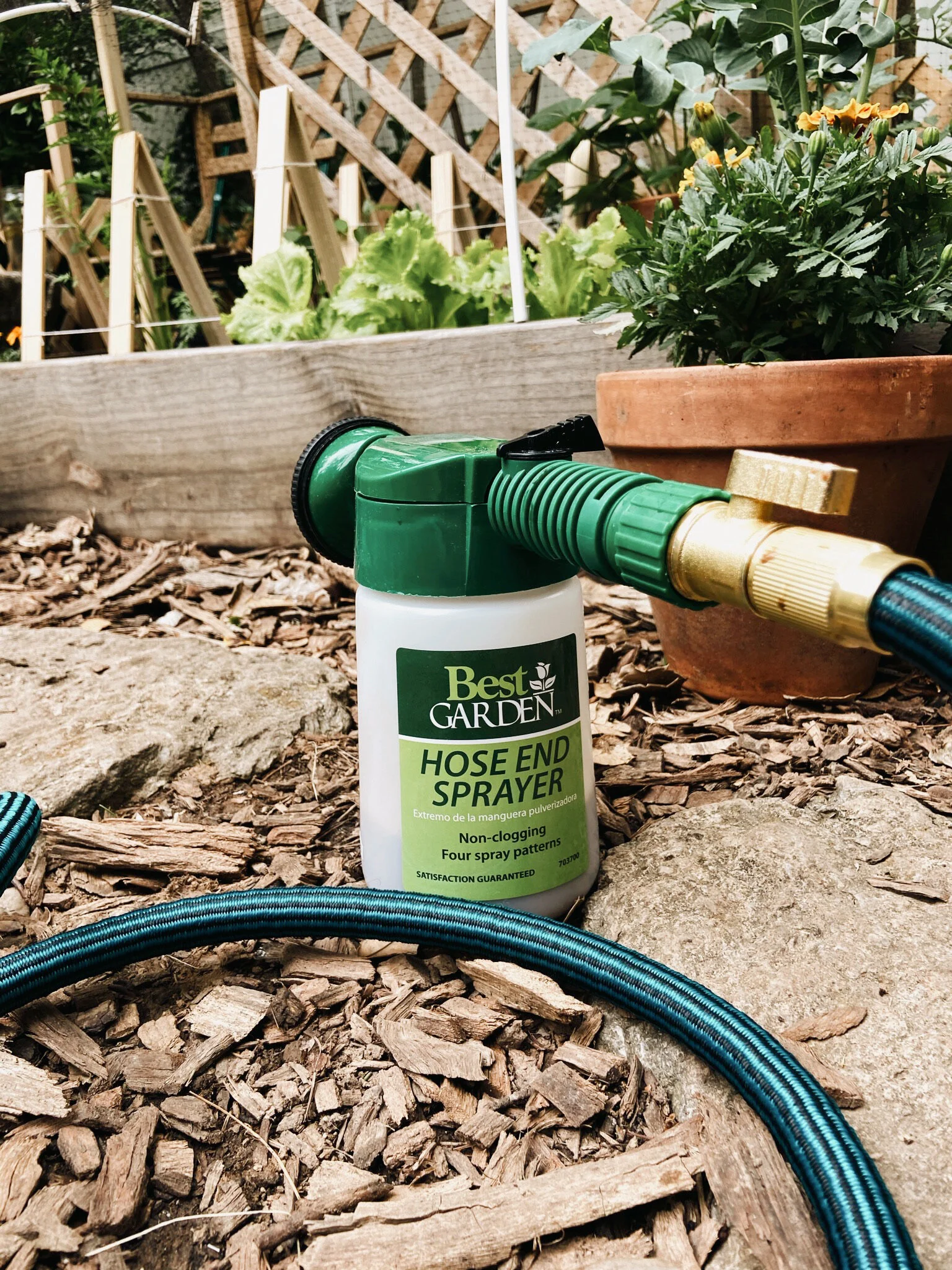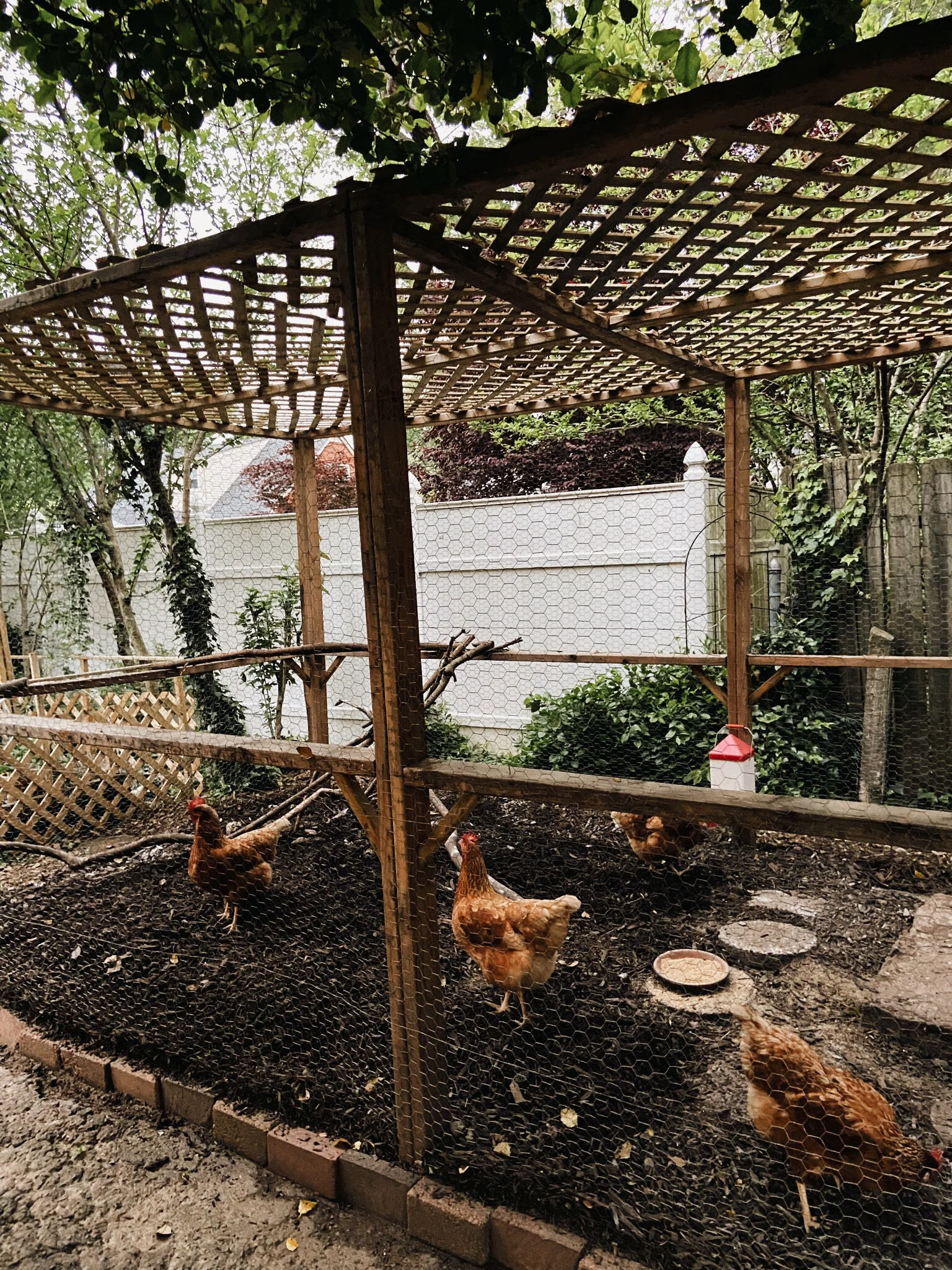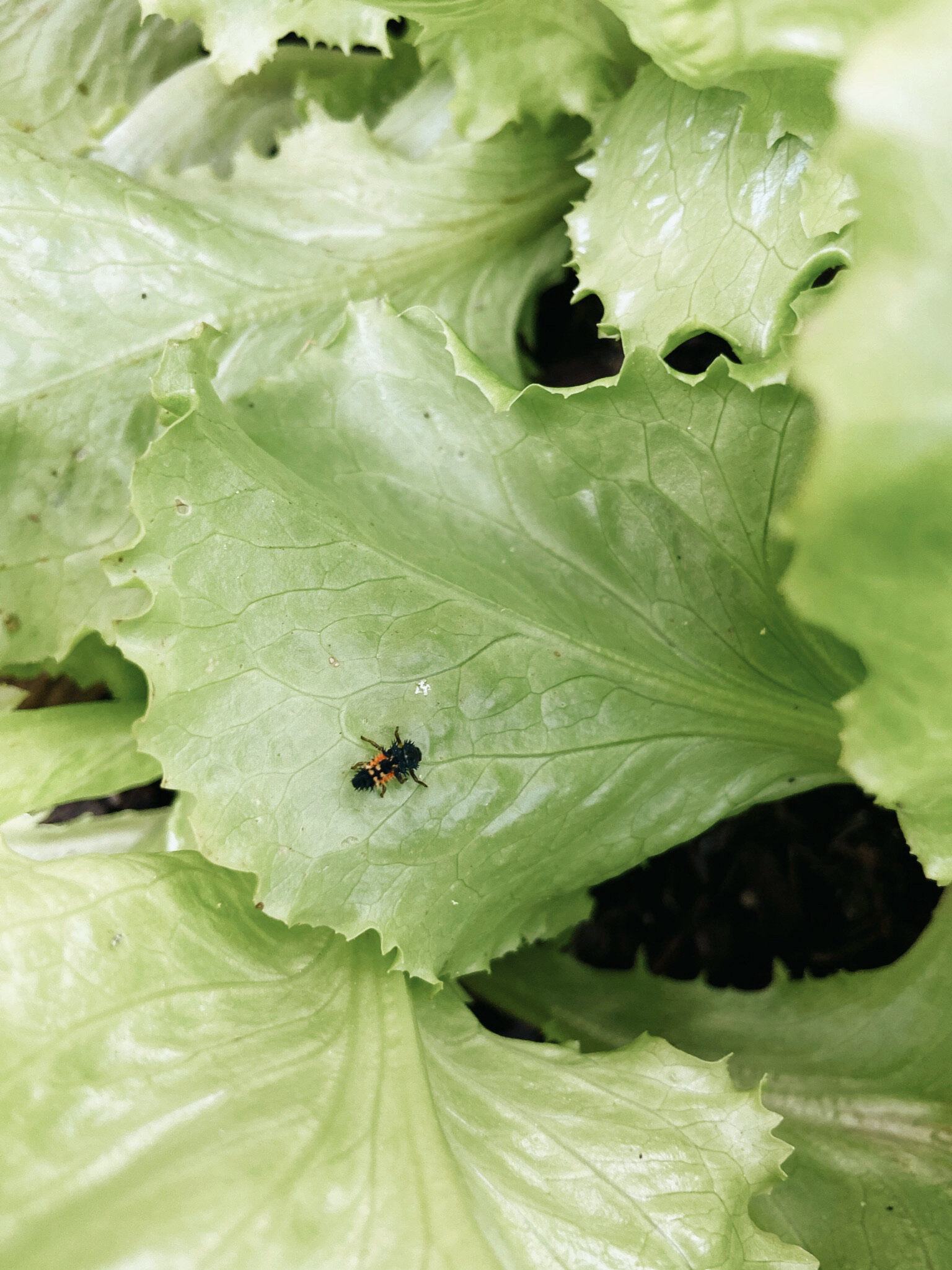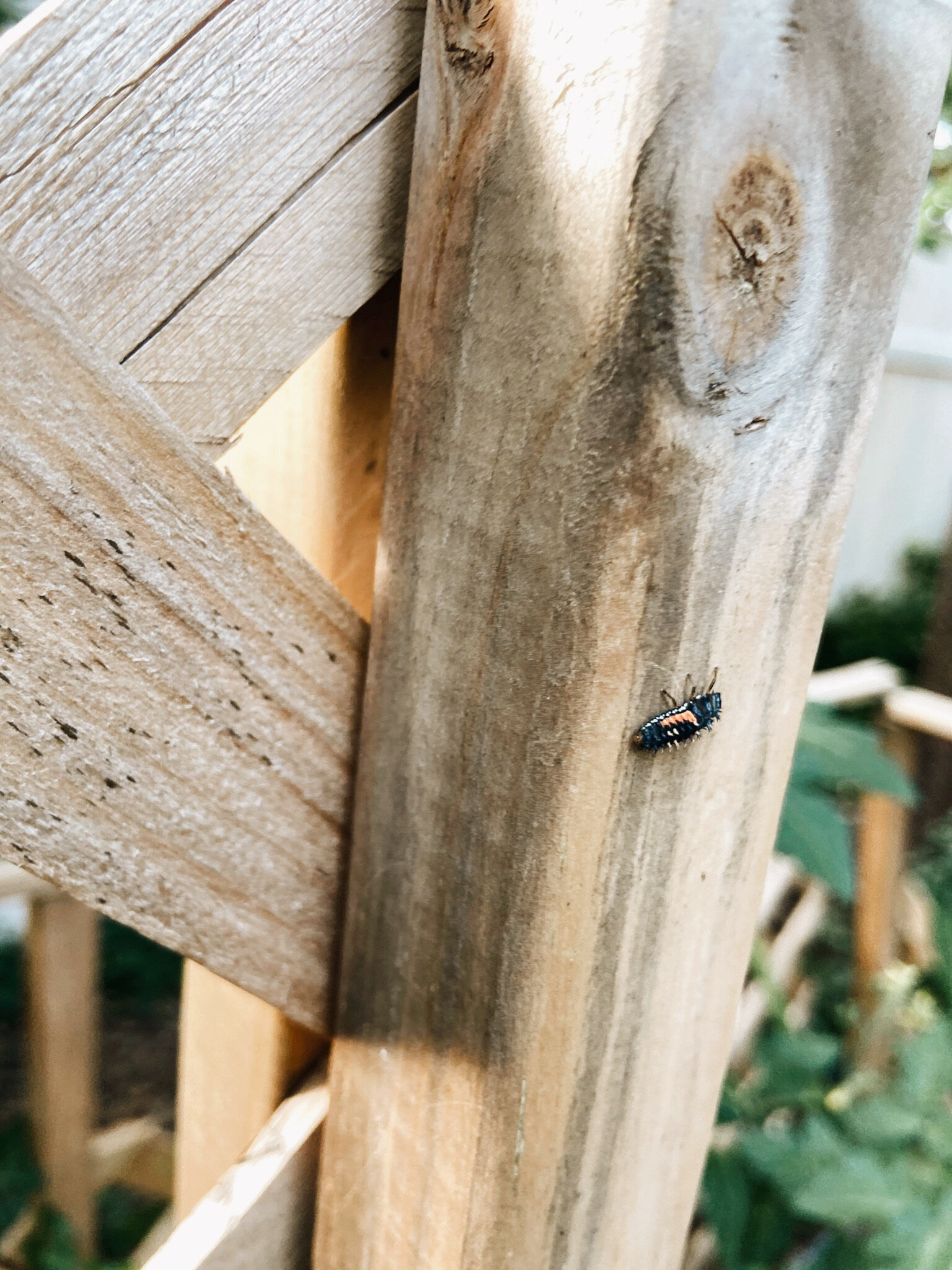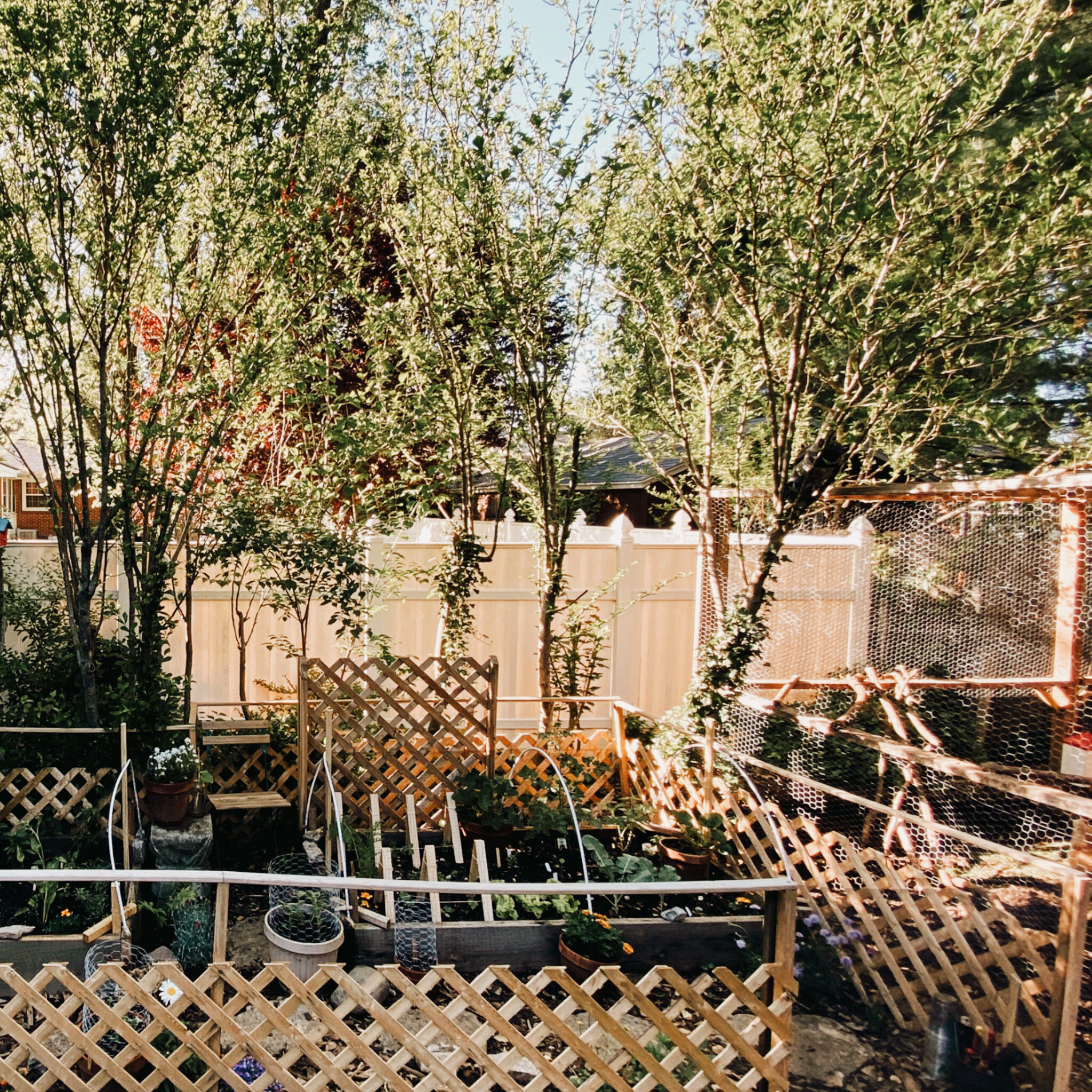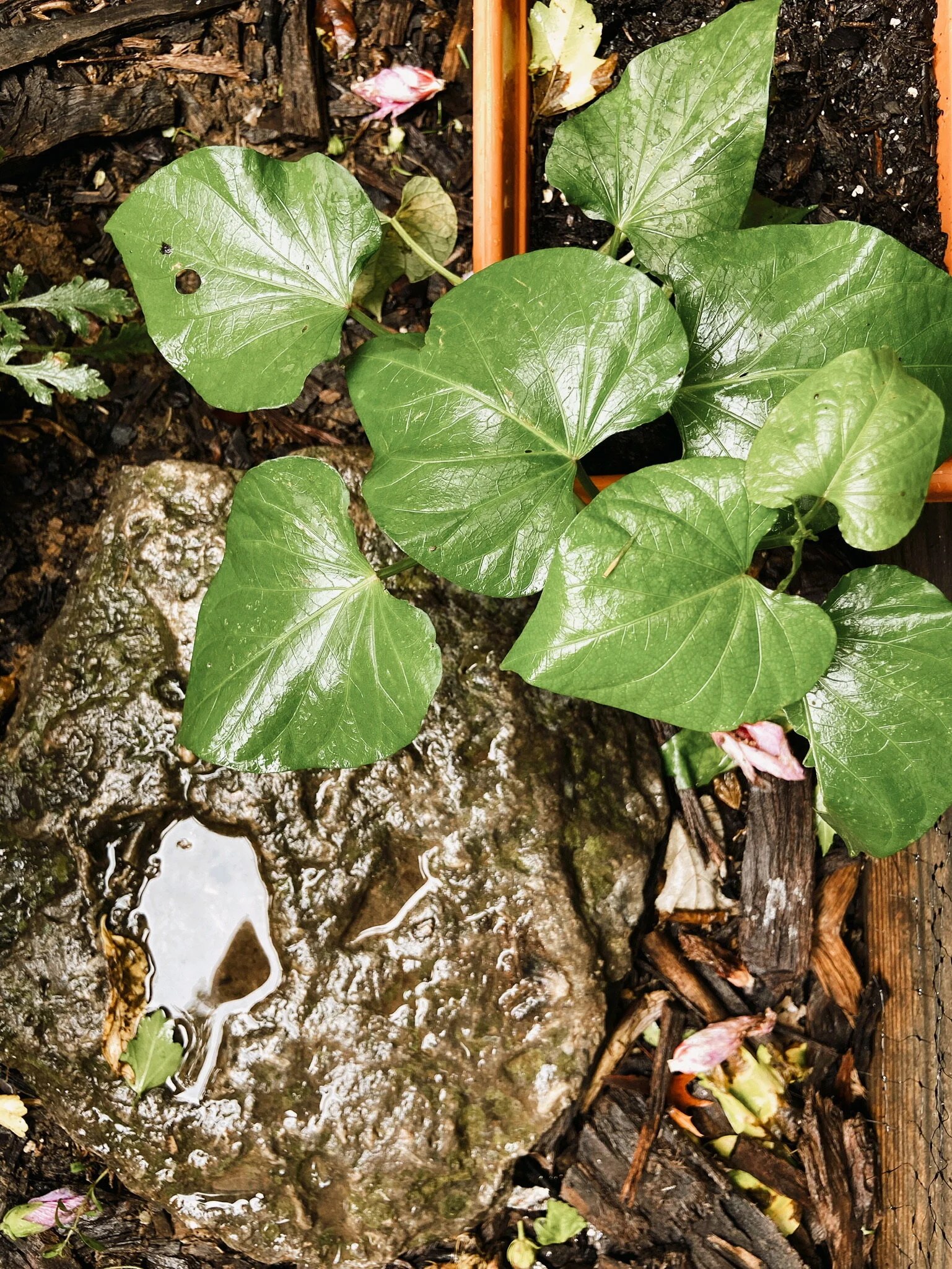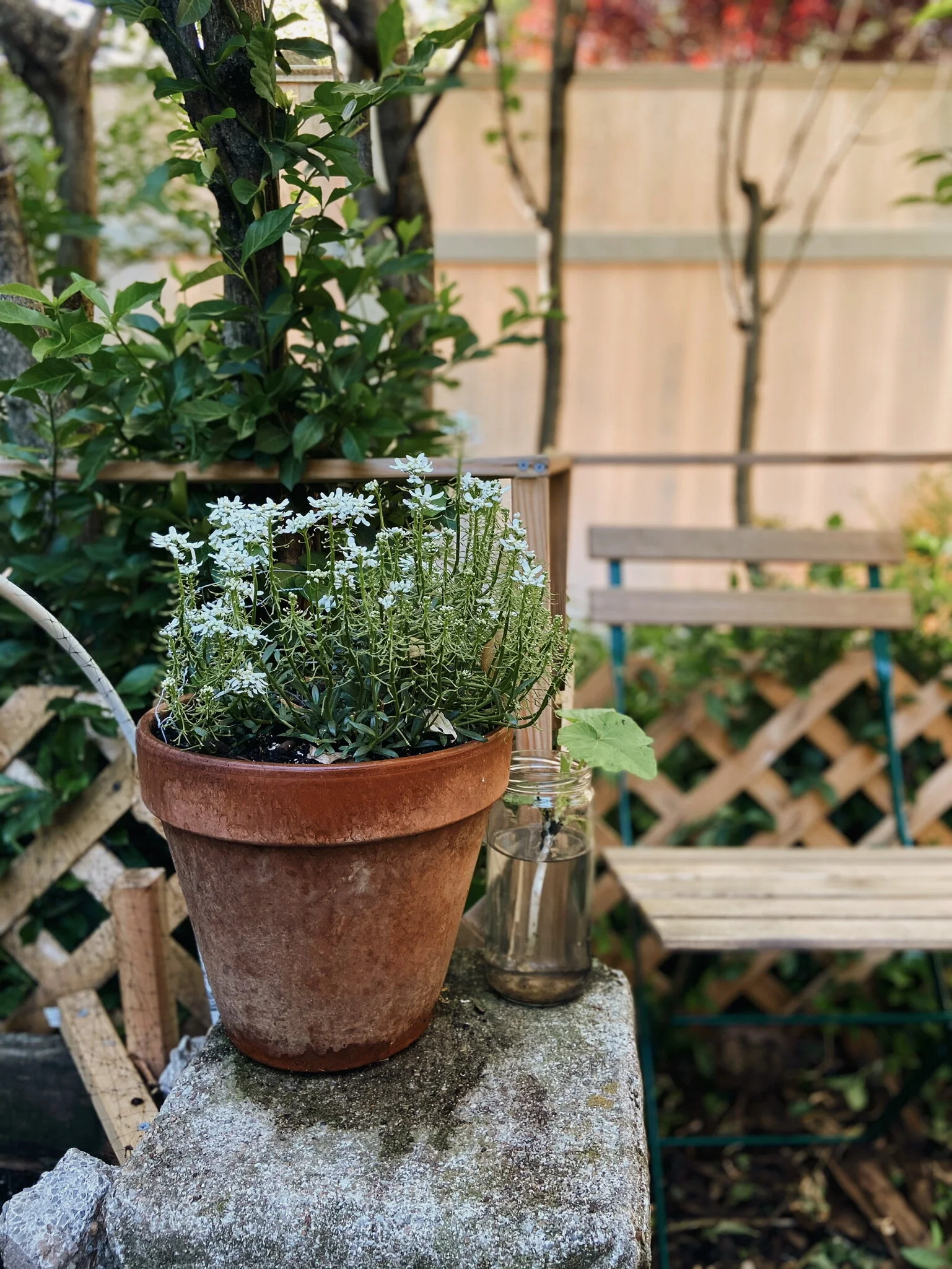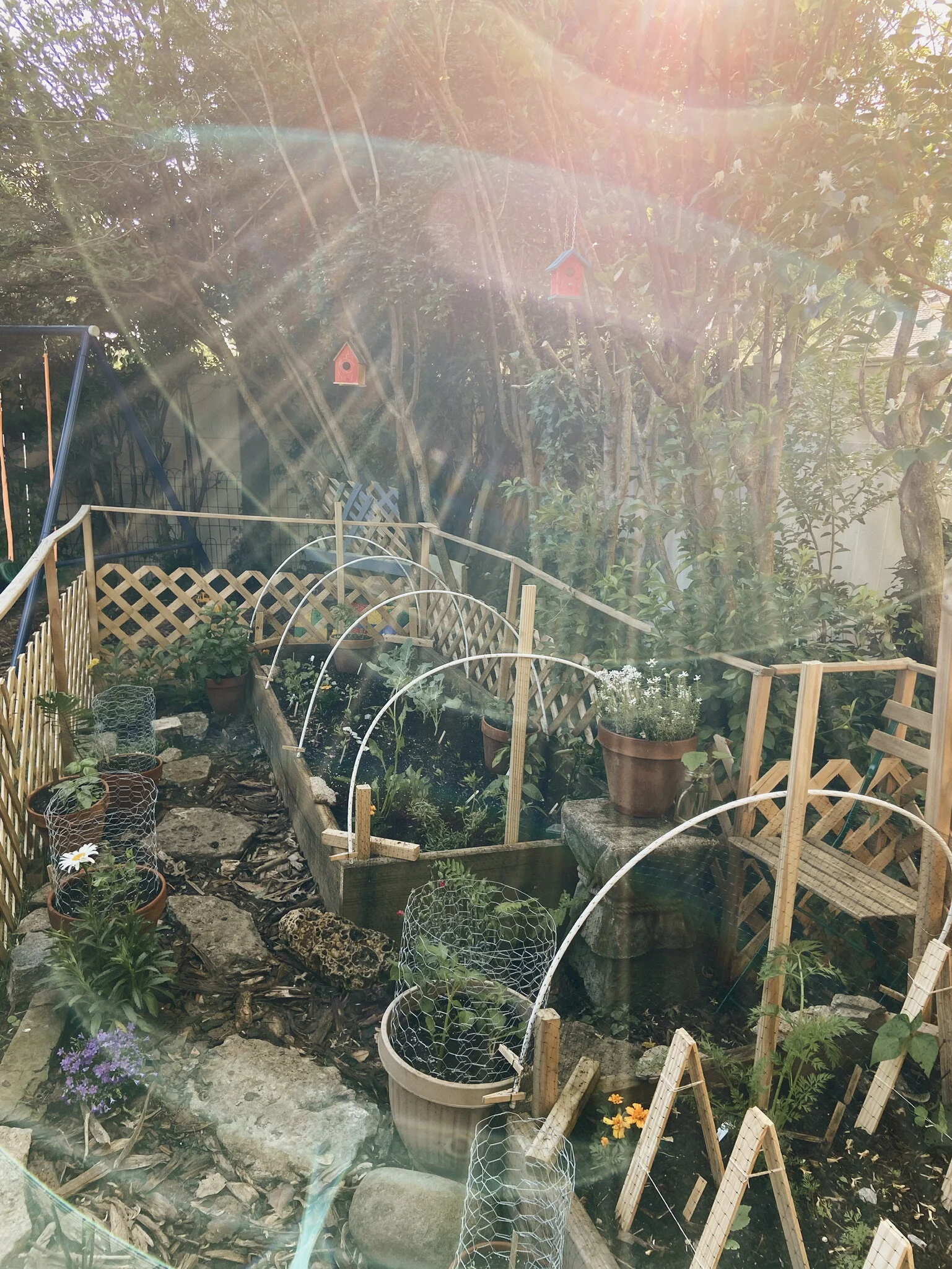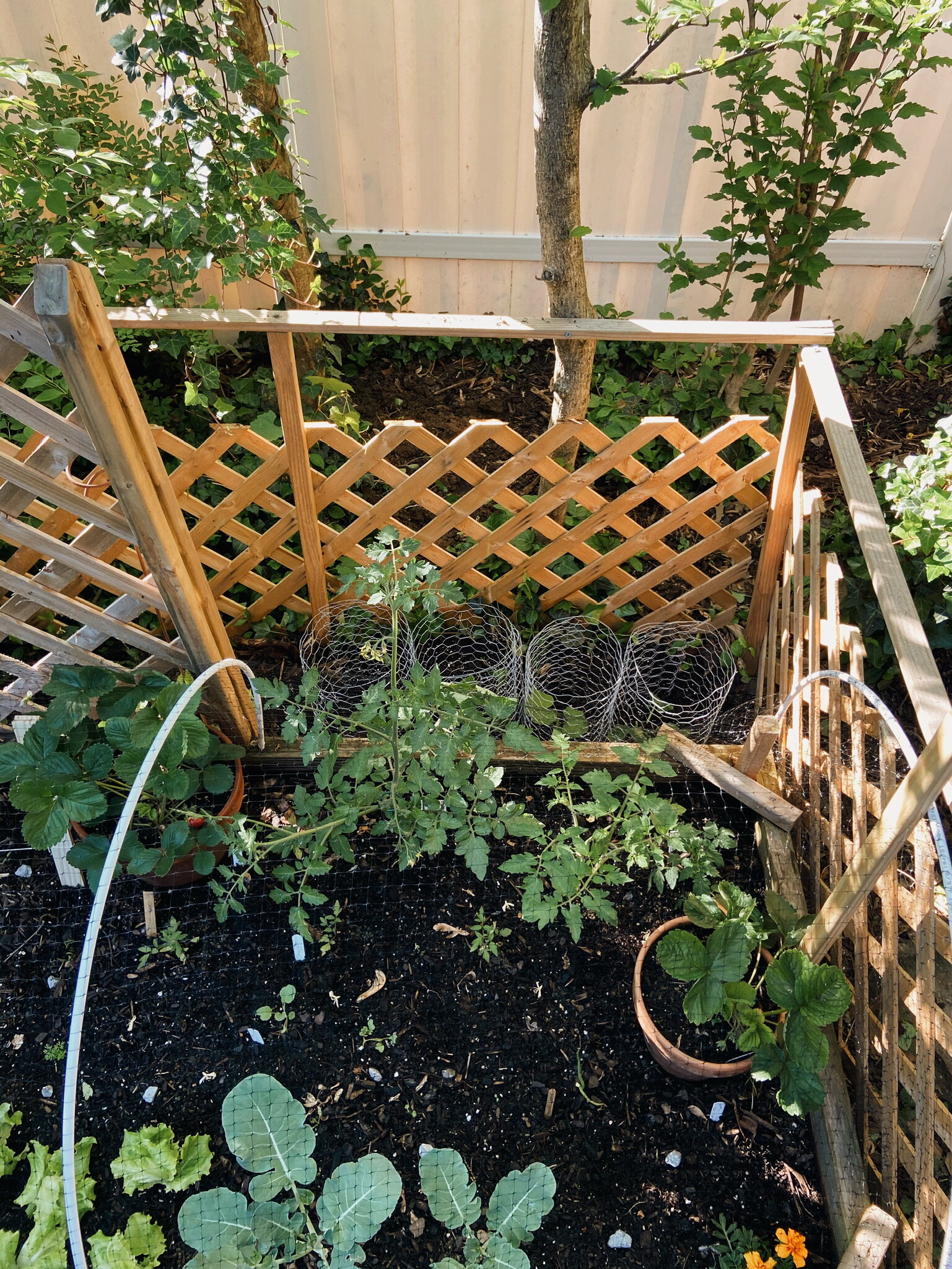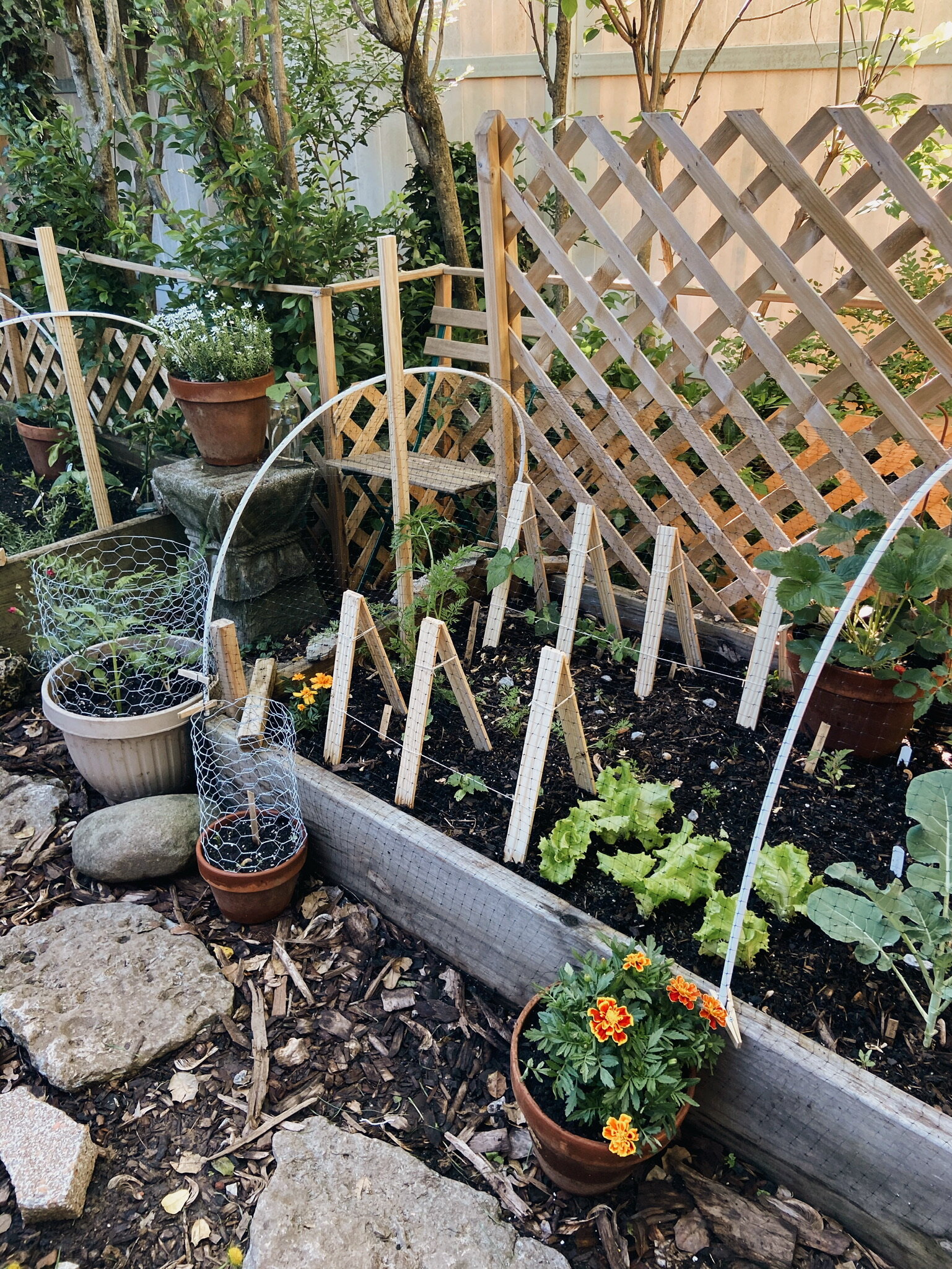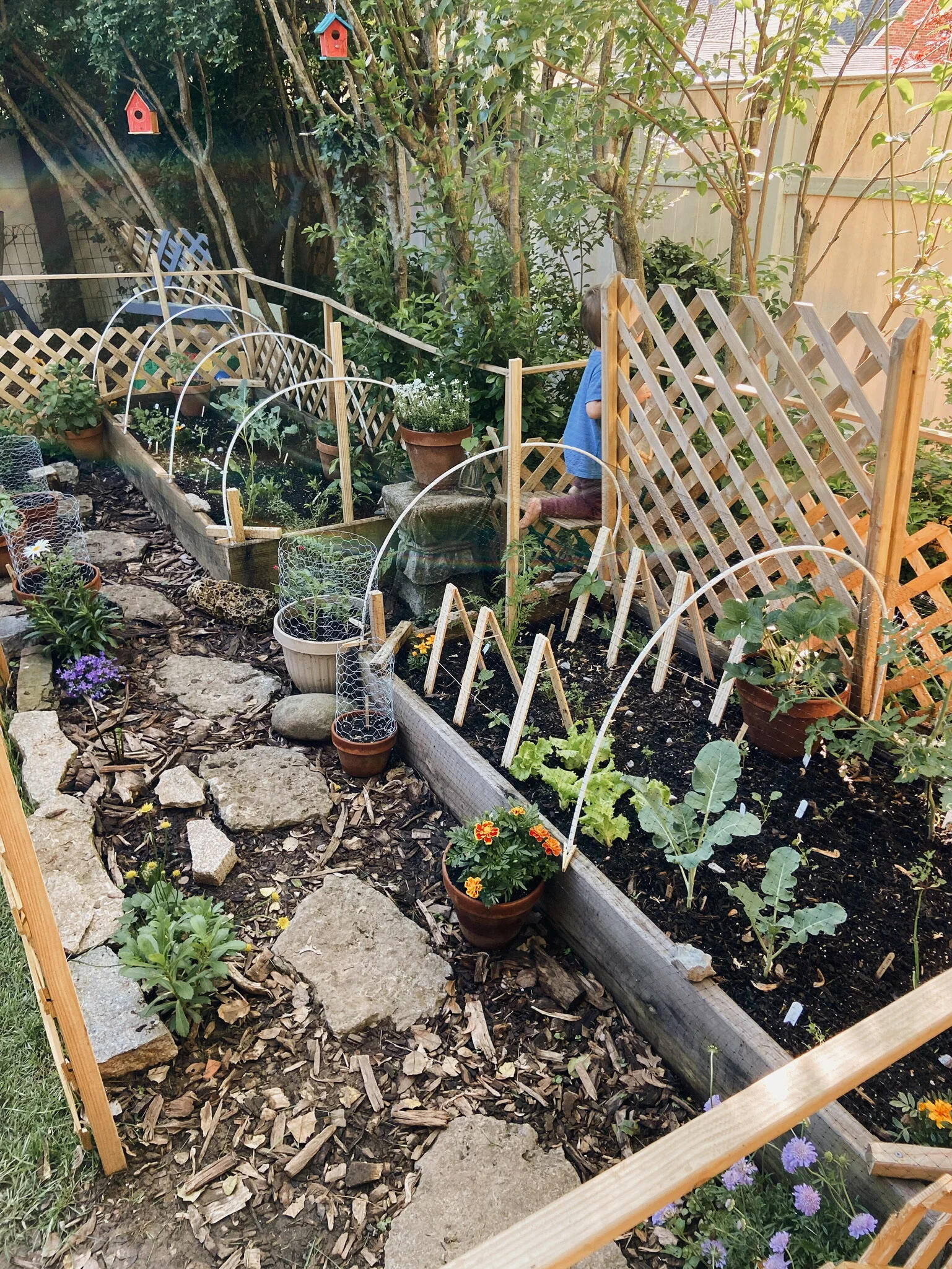THE BEGINNER’S GARDEN
I was the kid who preferred to play in the mud in the backyard, find a creek to explore, or plant anything I could find in a little corner of my childhood backyard.
Even though our current backyard is TINY it’s actually the most space I’ve ever had and I’m thrilled to pieces that I've been able to add the things into our yard that we have. We’ve been renting here since 2018 and I’ve slowly worked on the yard (the back mostly) more and more each year.
I have always loved gardening but these last few years has been my first "real" garden.
SETTING UP MY GARDEN
When I first set up our garden in the back yard, there was some initial prep work that I needed to do. Here's the list of the things we used.
Wood
2x12x8 (3)
(2) 8-foot sections for the outside of the bed.
(2) 4-foot sections for the ends of the bed.
2x2x16 (3)
We cut these into (4) 3-foot sections and drove them into the ground on the inside of the corners of the bed to help keep it stable.
We also cut (4) 1-foot sections to help secure 3-foot sections we drove into the ground.
Screws
#9 x 3 in. Philips Bugle-Head Coarse Thread Sharp Point Polymer Coated Exterior Screw (1 lb./Pack)
Shovel - Flat shovel works the best
Level - For checking level of the ground
Rocks - We placed 1.5 - 2 inches of gravel rocks at the bottom of our second garden bed. This helps with:
Keeping weeds from growing up from underneath the garden bed.
Deterring burrowing pests from coming in from underneath (more on keep out pests below).
Strengthening and adding durability to your bed.
Soil - The type of soil you select for your garden is really important for a number of reasons:
It provides much needed nutrients for your plants as they grow.
It helps support the root system of your plants and keeps them strong as they grow.
It holds water to keep your plants well hydrated.
It breaks down organic materials and turns it into a source of food for your plants.
We use Premium Raised Bed and Potting Mix by Kellogg Garden Organics.
Compost - for layering in the garden. The most important thing to know is that you should have compost where your roots will interact with it. Don't put it too far down. Here's a quick overview video by Joe Gardener explaining how to properly use compost in your garden: How to Add Compost in the Garden
Chicken wire - I use this for creating barriers around some of my potted plants to help keep critters out (more on this below).
Mulch - Mulch helps your bed retain moisture by acting as an insulating barrier against heat and wind. You can get mulch at Home Depot or just about any store with a garden center. However, if you have some other areas of your yard where you could use some mulch AND if you aren't operating under a tight timeline, I would recommend using Chip Drop. They'll bring a whole truck load of mulch to your house for FREE. If you want to learn more about Chip Drop, how they operate, and if it would be a good fit for you check out their website.
Seeds - Here are some of the sources I've either learned about or purchased seeds from:
WHAT I’VE GROWN IN MY GARDEN THIS YEAR
Vegetables:
Tomatoes - Delicious, Roma, Fourth of July, Cherry
Beans - Purple
Peas - Sugar Daddy
Carrots
Lettuce
Cucumbers
Strawberries
Broccoli
Bell Peppers
Italian Pepperoncinis
Jalapeños
Beets
Spinach
Radishes
Arugula
Celery
Sweet Potatoes
Mini Potatoes
Herbs:
Basil
Sage
Dill
Thyme
Lavender
Cilantro
Chives
Flowers / Plants:
Daisies - Shasta, Common
Zinnia
Sweet Pea
Marigold
Brown Eyed Girl
Oakleaf Yellow Picotee
Pincushion Flower
Leopard's Bane
Purple Get MEE
Stone Crop
Ferns
Milkweed
Plant Hardiness Zones - Here is a helpful resource from the Farmers Almanac that tells you you how to time planting in your area: Plant Hardiness Zones
MAINTENANCE
Maintaining Soil:
Lime - To help balance out the pH and rid the soil of unwanted bugs you can sprinkle some garden lime right in your bed.
Fish Fertilizer - This helps keep essential nutrients in your soil. I will add some to my hose end sprayer when I'm watering my garden about once a month.
Maintaining Pests:
As a general rule of thumb, I try to exhaust all of the natural options for dealing with garden pests. Which means, I'm going to do whatever I can to stay away from synthetic herbicides, pesticides, or fertilizers. Here are some of the things I've tried that have varying degrees of effectiveness.
Chipmunks + Squirrels - This has been one of the most consistent sources of struggle for my garden. We've tried a lot of different things to keep out these little pests. Here are the ones that have brought the most success.
Peppermint Diffuser - chipmunks and squirrels don't like the smell of peppermint. You can place little peppermint diffusers in your garden to deter them from digging up your seeds and eating growth off your plants.
All you need to do is fill little Tupperware containers with peppermint oil, cut a slit in the top, and stick a wick into the container so that the bottom is immersed in the oil and the top is in the air outside of the container.
Here are the links to the items that I used.
The smell wears off pretty quick with these, so you will need to check in them and make sure you're replacing the oil regularly.
Chicken Wire Covers - One of the gardeners I follow on Instagram has a great little tutorial on how to create chickenwire barriers for your plants. You can watch the tutorial here: Chick Wire Covers
Irish Spring Soap - It's important for this one that you use Irish Spring. There's a specific ingredient sodium-tallow (fat) that gives off a smell that deter animals. All you need to do is take a cheese grater and create a barrier around your garden bed. You don't need to put any in your bed, just around the outside should be sufficient.
Bird netting w PVC piping - We've covered the garden beds with bird netting to keep out pests. We evenly distributed small PVC piping on the top of our garden bed. All we did was drive some small nails (small enough that they'll fit inside of the piping) on the top of the bed. We threaded the piping through the bird netting so I could pull the netting up and still access the garden without messing anything up.
Between the rocks at the bottom of the bed and this barrier at the top, I've found that it really helps these pests from messing with my garden. But, as always, "life finds a way." In this case they find little holes in the netting or gaps along the edges to squeeze their way through.
Insects:
Neem Oil - Unhelpful insects are bound to show up in your garden. Keeping your garden sprayed down with neem oil will help you naturally keep these pests away.
Plant Cover - If you're planting broccoli, you will probably want to invest in plant covers. They will keep Cabbage White Butterflies from laying eggs on your broccoli and infesting them with broccoli worms. Of course, you can always pick them off. They can get a little out of control sometimes, so I would recommend preemptively using the plant cover.
Beer - Slugs are new to my garden this year. They're everywhere! And they love eating stuff in the garden. They also love the smell of yeast - which makes beer great remedy for these guys. They're attracted to the smell and they crawl in and drown. I just pour some beer into a small Tupperware container and place them in my garden. You will want to keep an eye on these and make sure you're emptying them out regularly and refilling.
*What I've found with most of these is that they work until they don't - so I keep almost all of them on a steady rotation.
Who I Follow
Learning form other people has made the process of starting a garden really enjoyable and achievable. Here is a list of Instagram accounts and resources for gardening help and inspiration:
I have a long way to go. I feel like I learn more and more every year. It also feels like as soon as I eliminate one problem, there's a new one to figure out. But you know what? That's kind of the fun of gardening. It's living and active. It requires time, energy, and strategy. It's (as I like to call challenges) a puzzle piece. Here's to learning as you go, trying new things, and just getting your hands dirty.
| Credits: Author - Jacintha Payne , Photography - Jacintha & Calvin Payne |


